Senso-ji Temple is the oldest and most famous temple in Tokyo. The temple was built in 645 A. D. and is dedicated to Kannon, the Buddhist goddess of mercy.
The temple feature two impressive entry gates, a five story pagoda, the main hall, streets lined with vendors and lots of other features that would be expected in Buddhist temples. My description of this temple is my experience from entering through the main gate.
Kaminarimon
The main entrance to the Senso-ji temple is through Kaminarimon which means thunder gate.
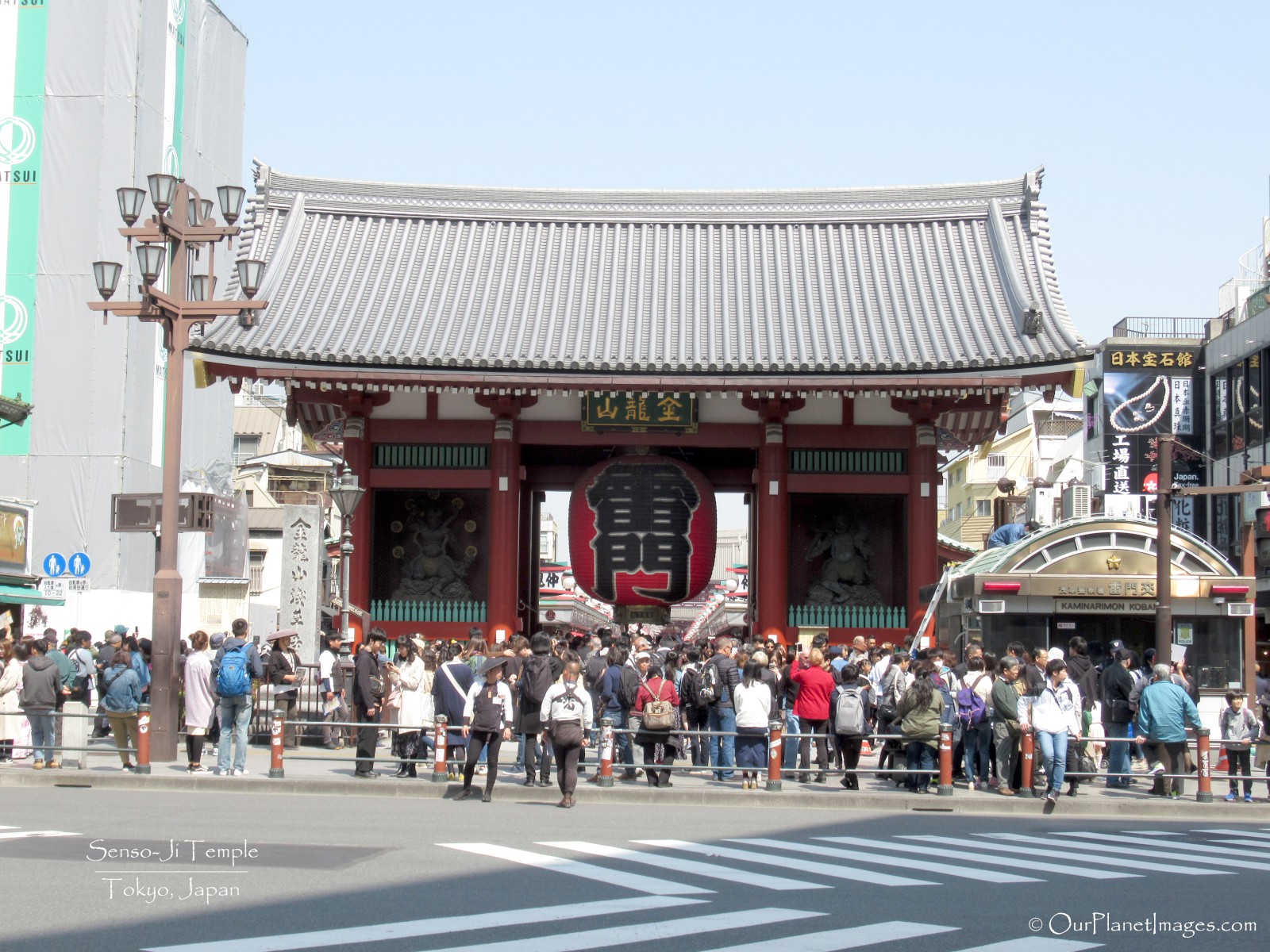

The entrance to the gate is through the center directly under and enormous red and black lantern. On one side of the gate is the god of wind and on the other side is the god of thunder.
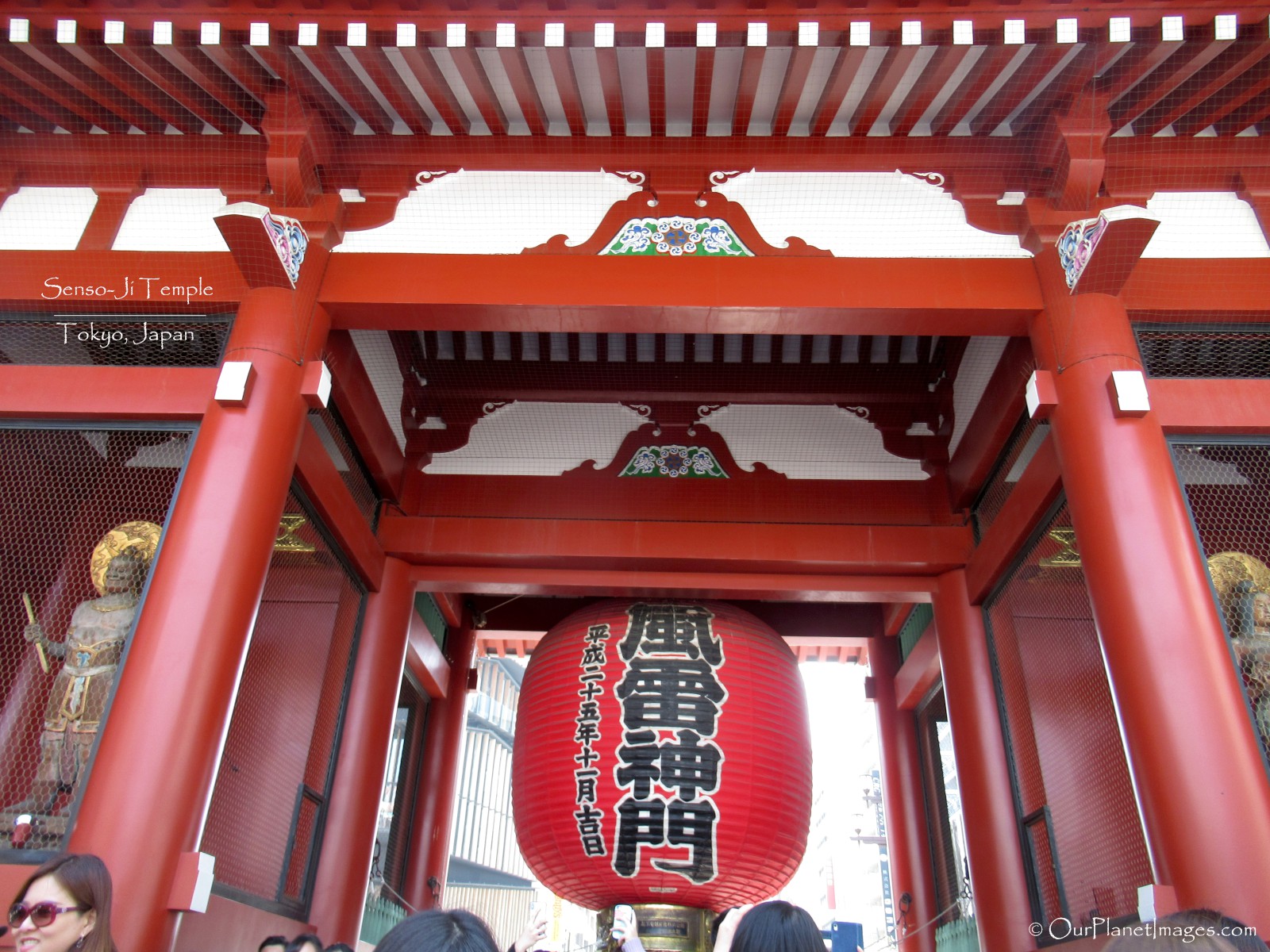
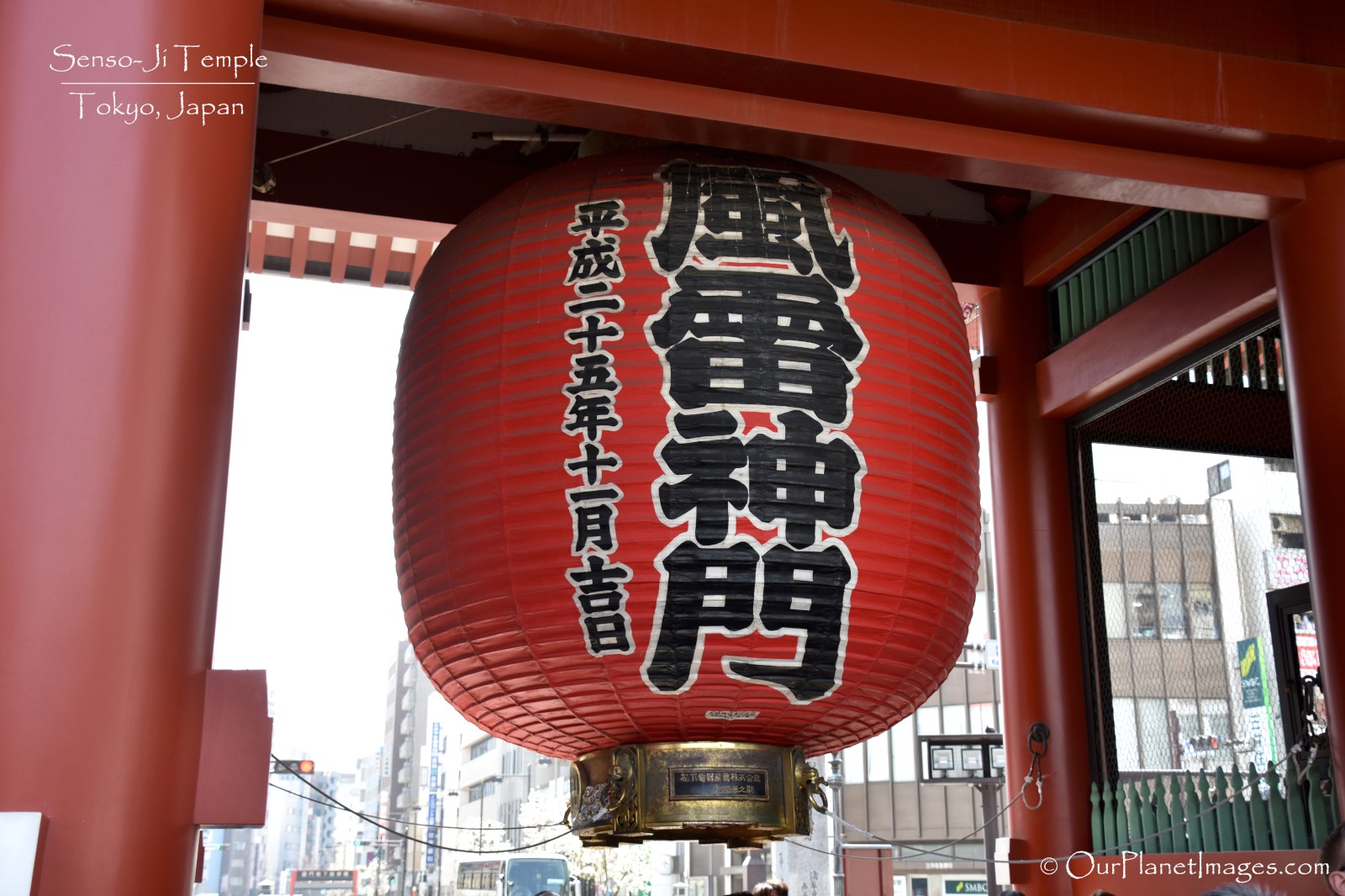
On the back side of the gate are two more statues that are shown below.
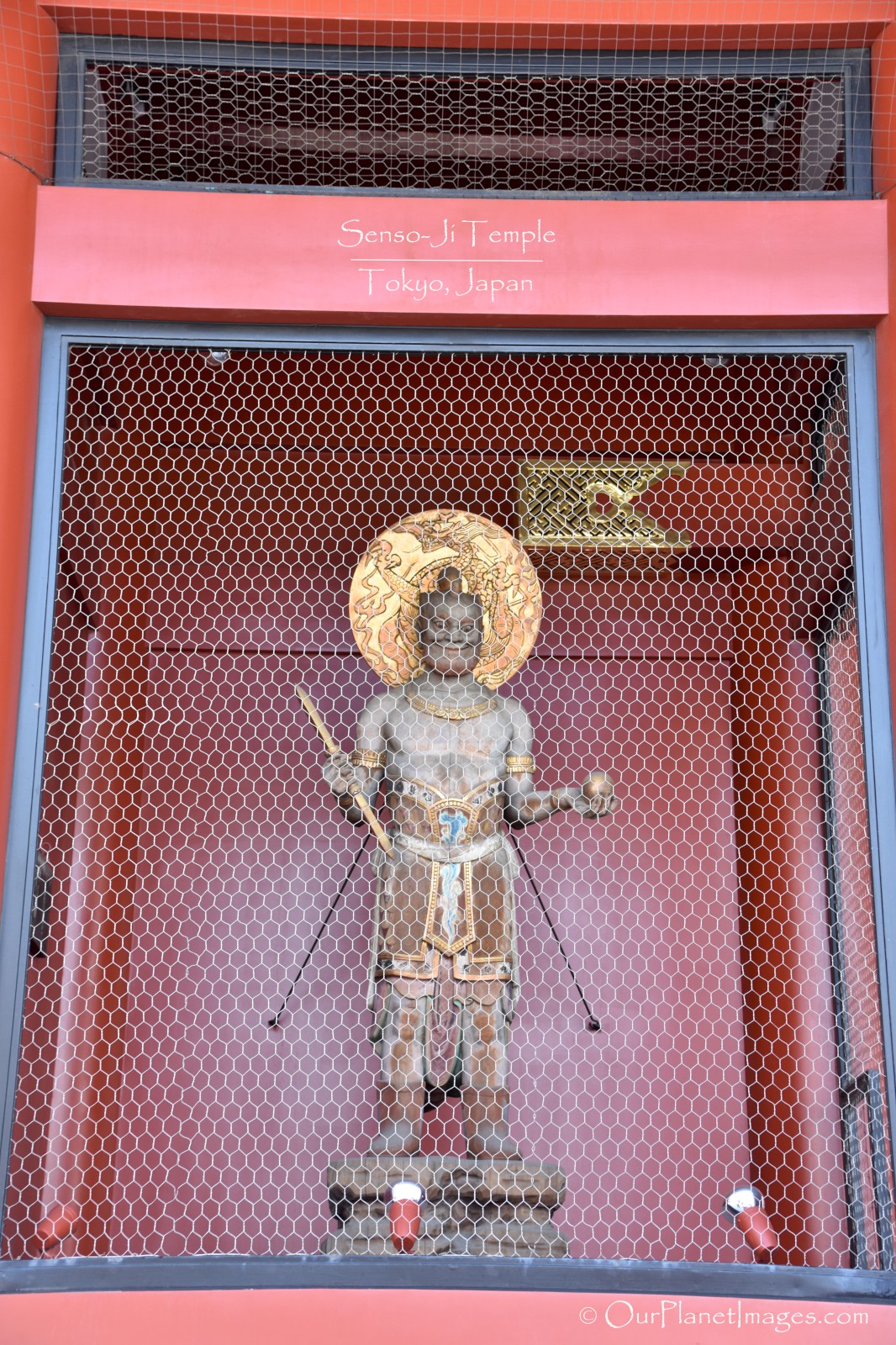

Nakamise-dori Street
After entering Kaminarimon gate there is a 200 meter shopping street called Nakamise-dori street. The street is lined with about 90 shops selling crafts, souvenirs and food.
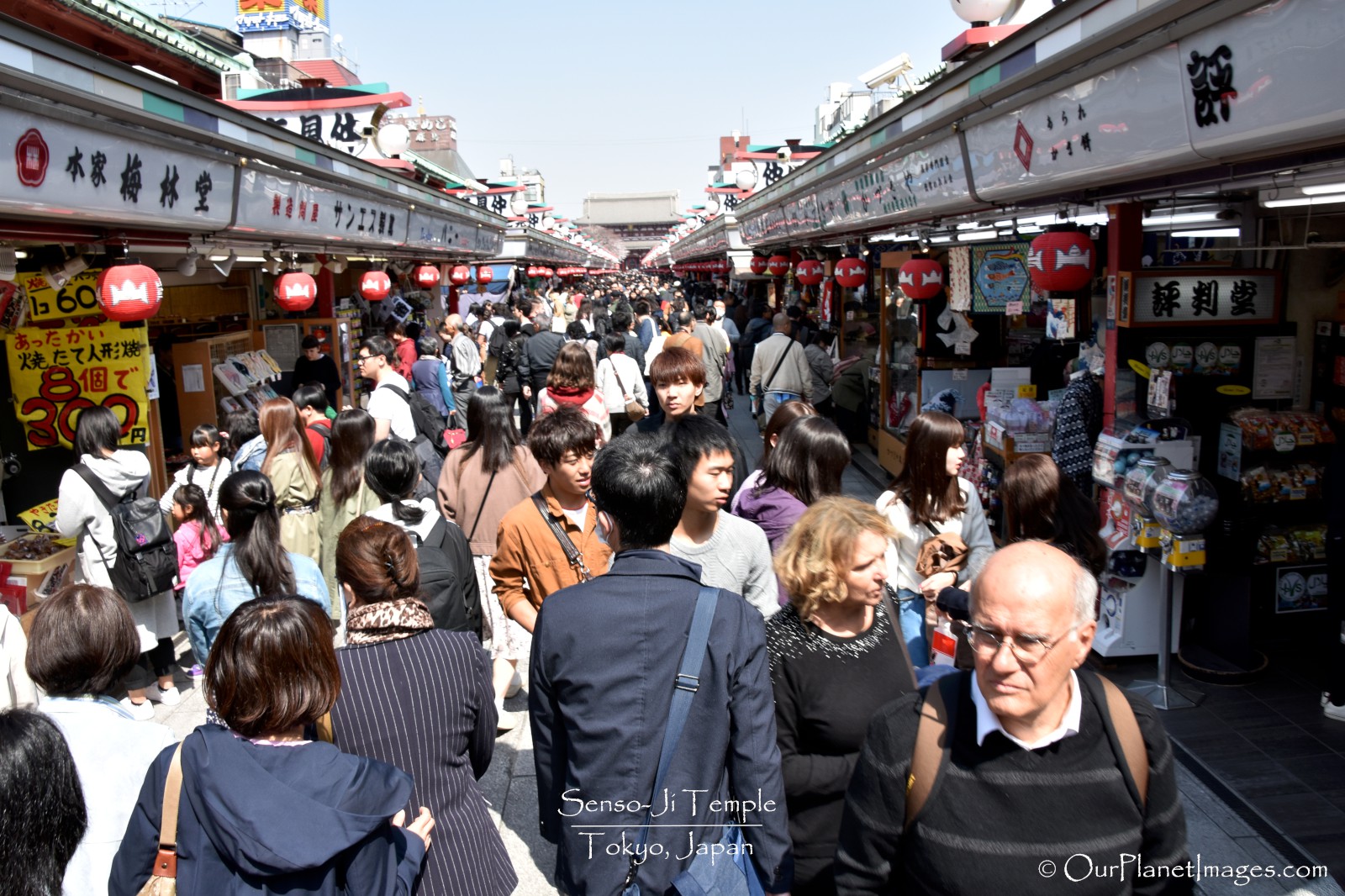
The street was so packed with people that we went around on some of the side streets which also had plenty of shop without the crowds.
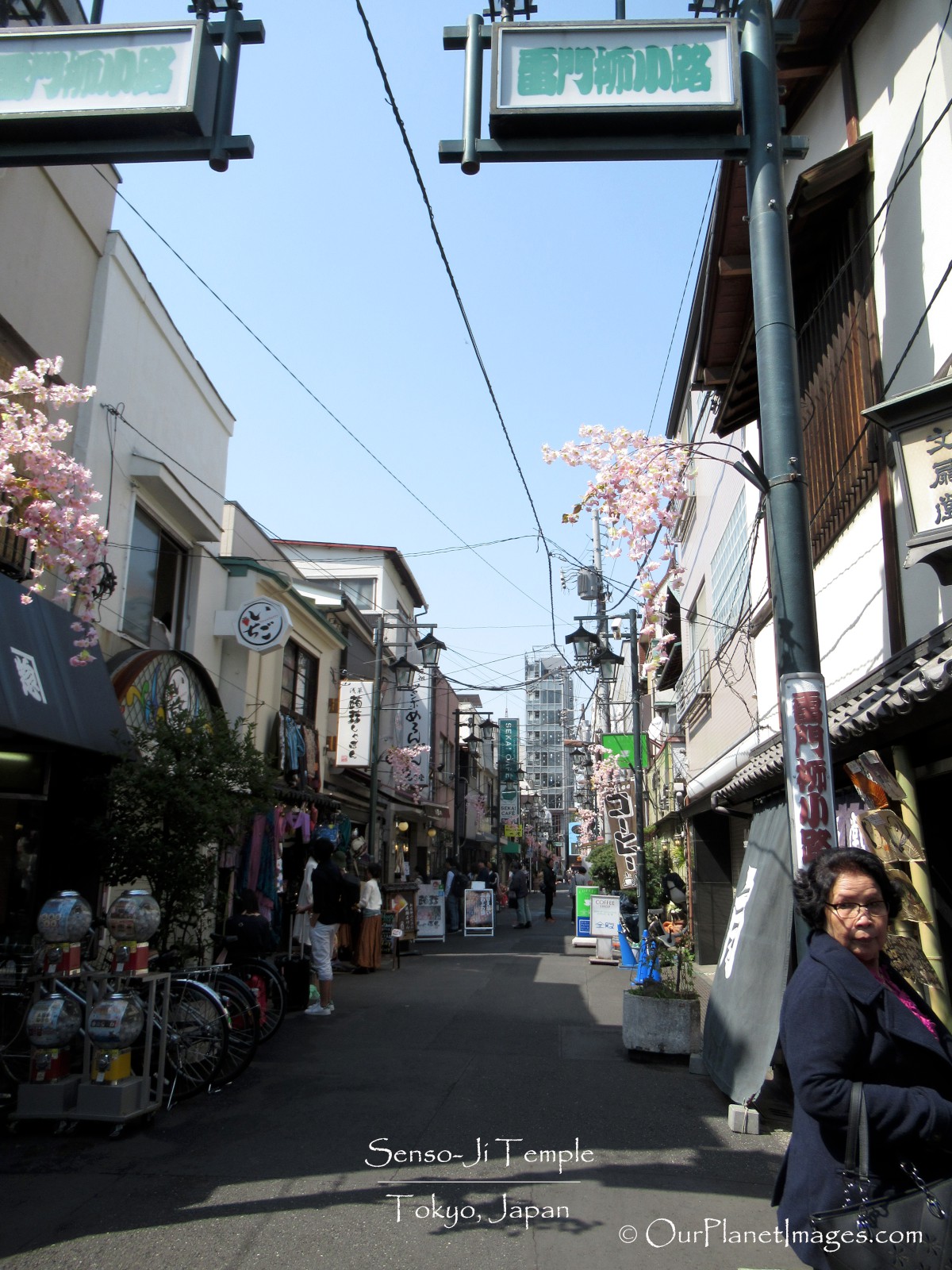
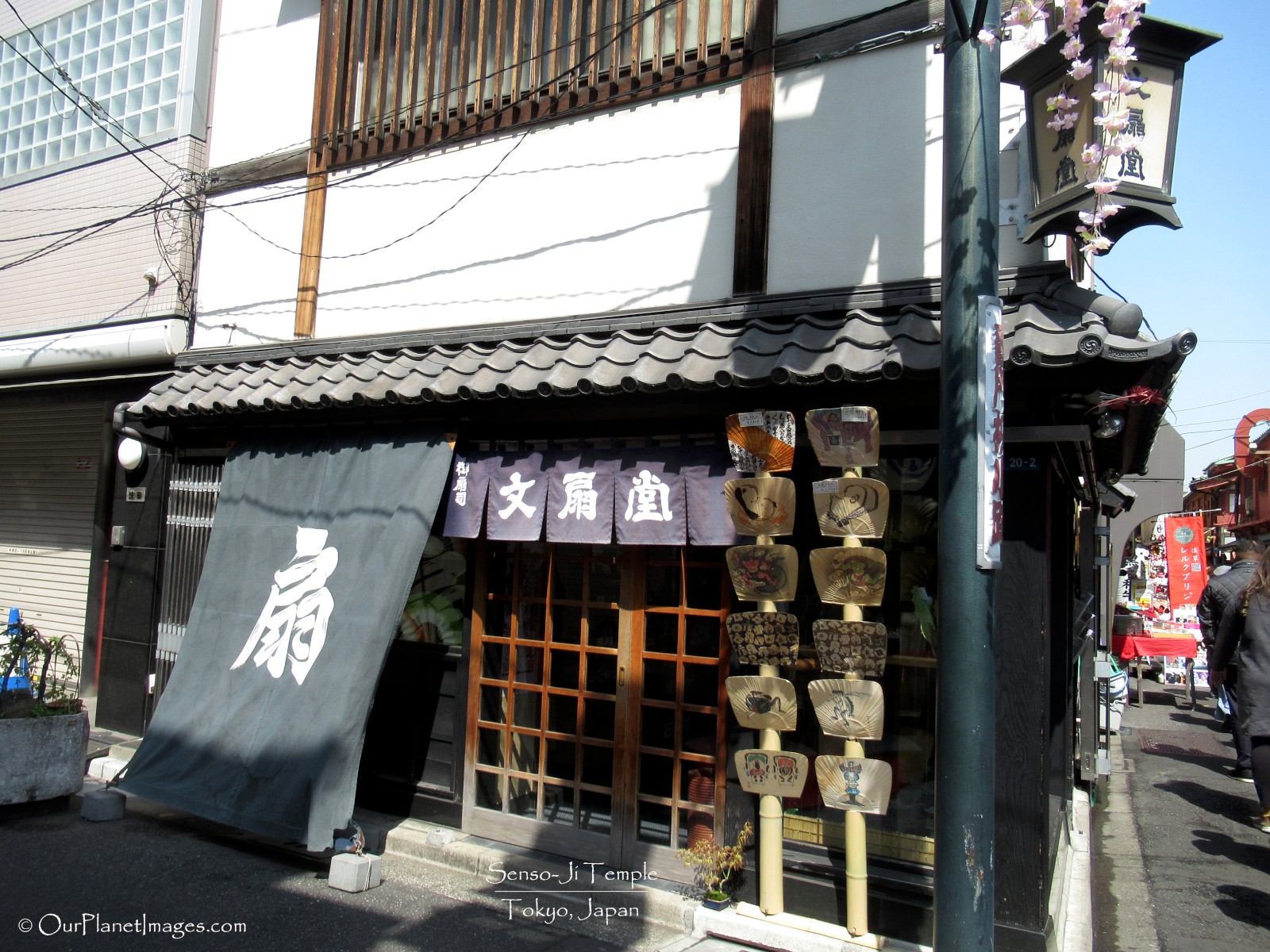
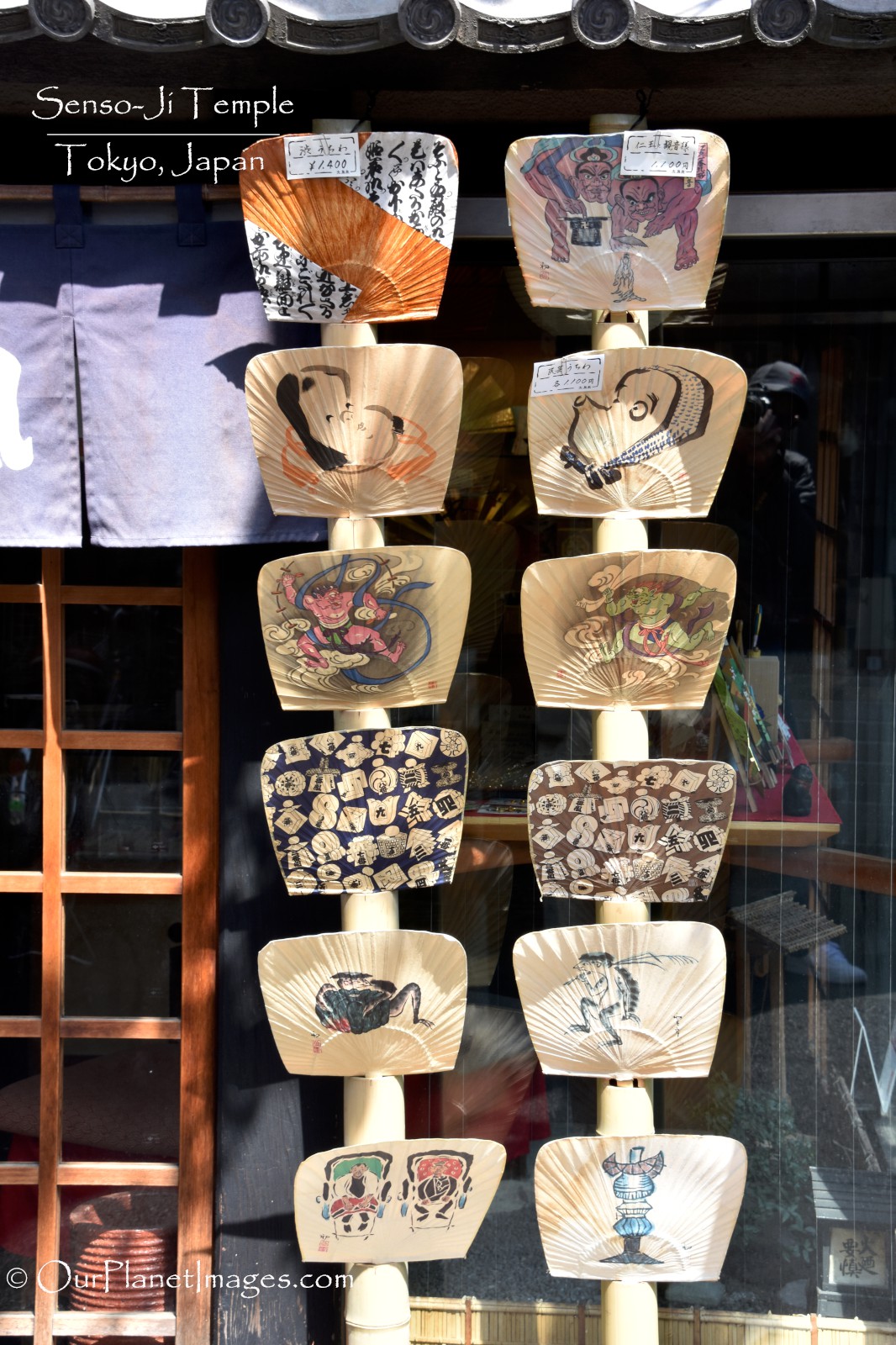
Just before getting to the Hozomon Gate there were several racks of white lanterns with Japanese writing on them, shown below.
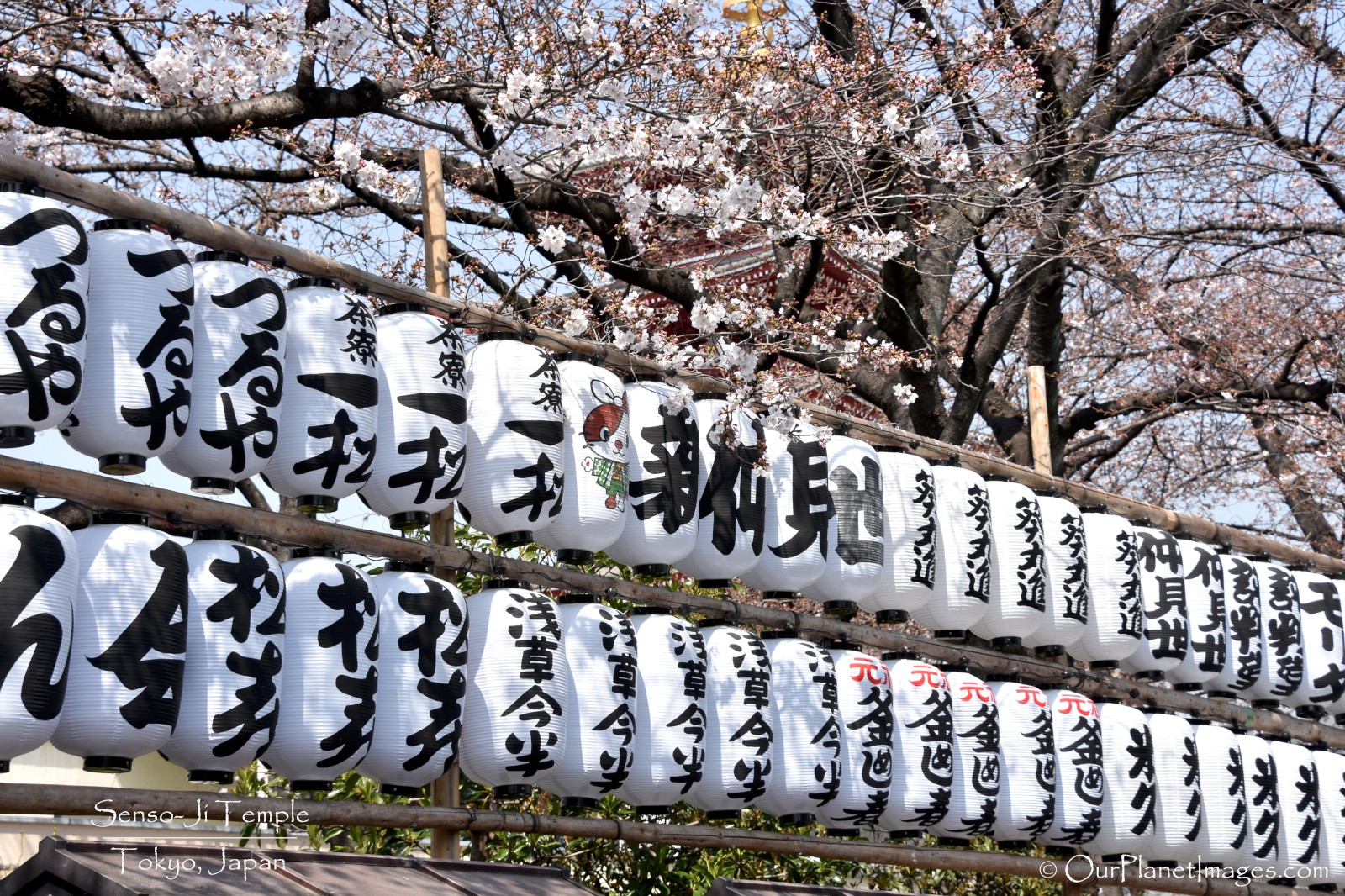
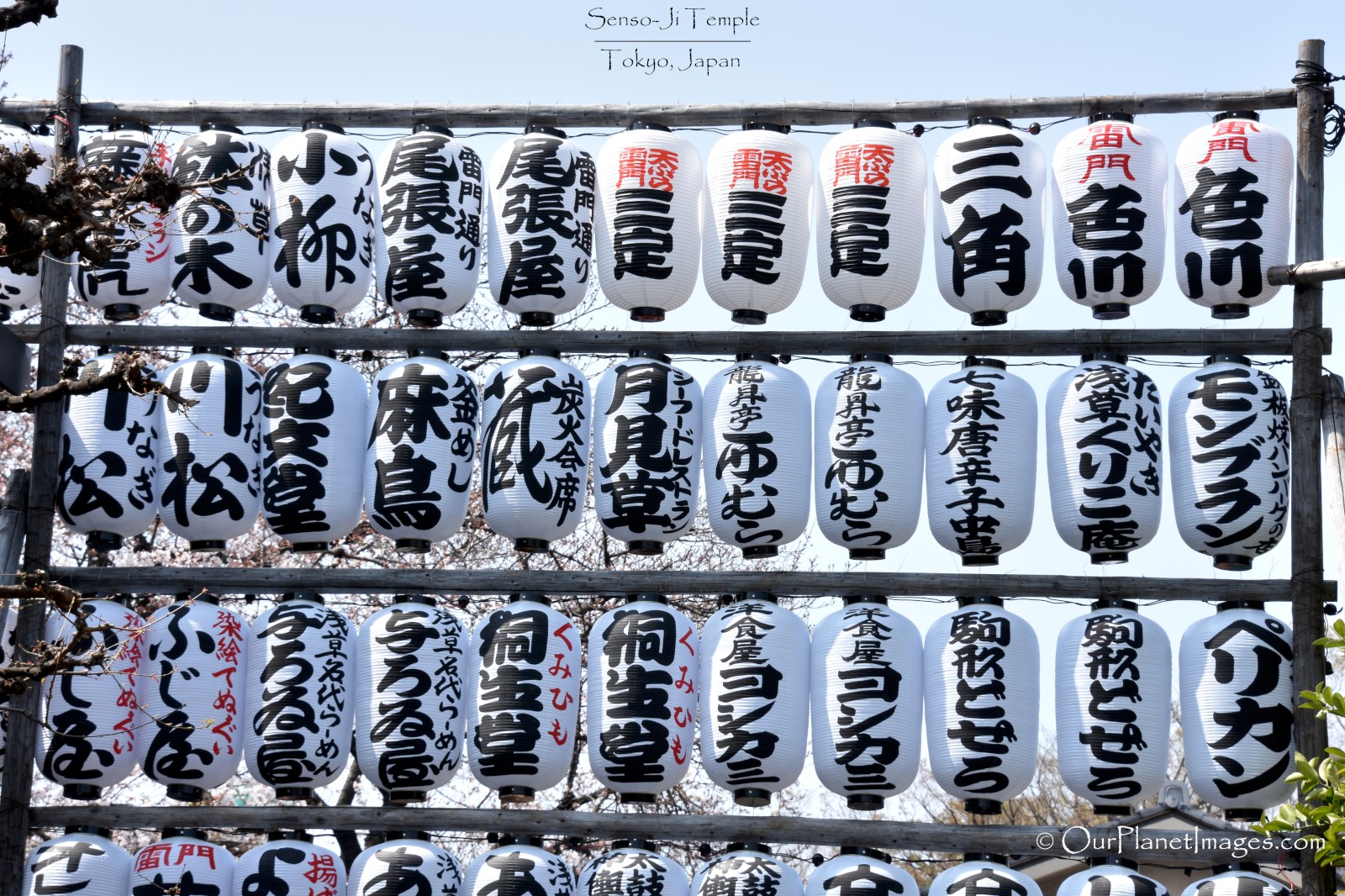
Hozomon Gate
The Hozomon Gate which means “Treasure House Gate” is the inner gate of the temple. It is a massive two-story gate with three entry lanes that stands 22.7 meters (74.5 feet) high, 21 meters (68.9 Feet) wide and is 8 meters (26.25 feet) from front to back. The gate was built in 942 A.D. but was burned down many times, the current gate was built in 1964 with fire proof materials so it is used to store some of the most treasured items of the temple.
Three large lanterns hang above the three entry lanes. The largest is a 3.75 meter tall red lantern with two smaller black lanterns on each side.
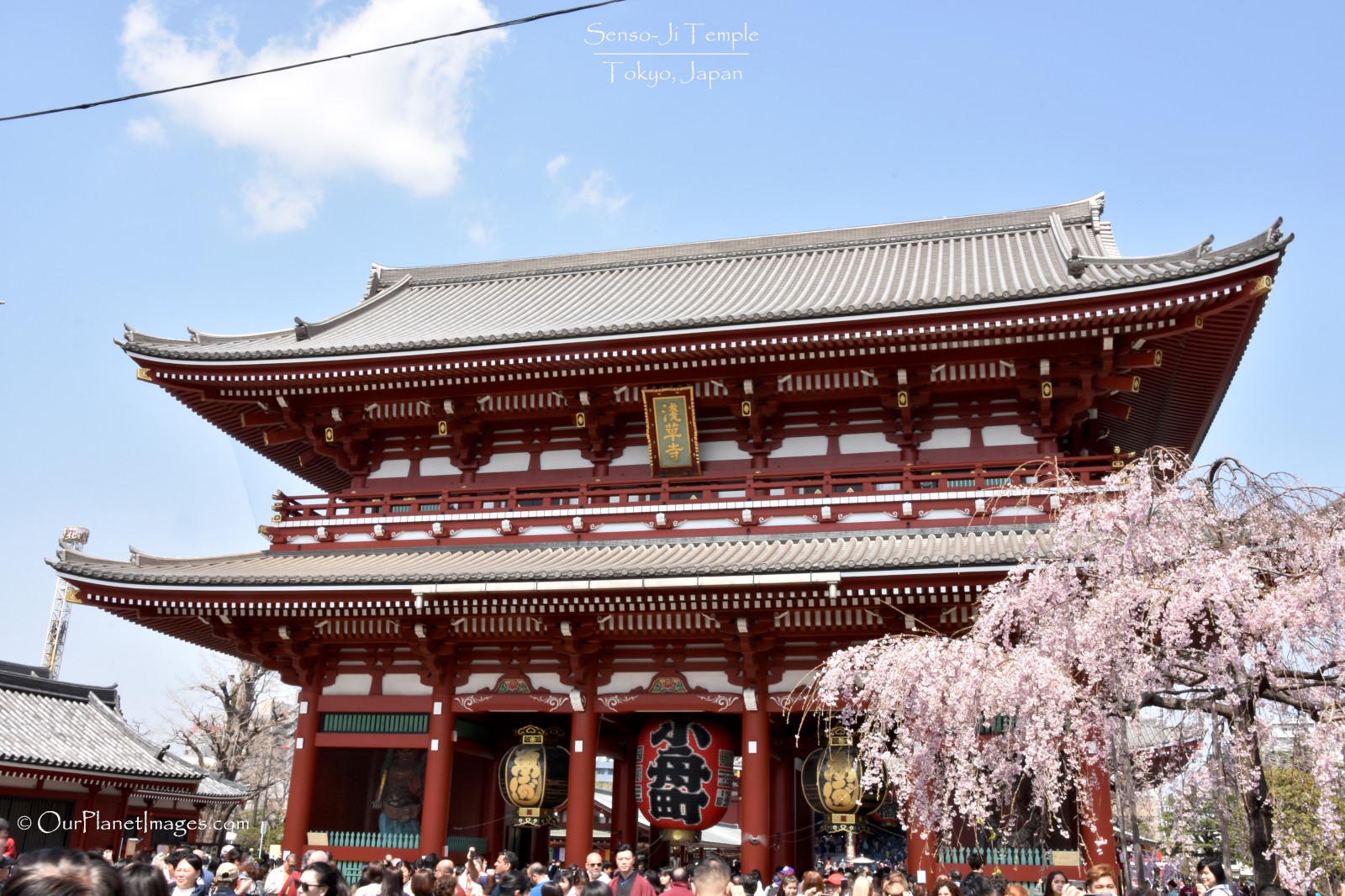
Main Hall
Passing through the Hozomon Gate is the entry to the main part of the temple complex with the Main Hall straight ahead. Prior to reaching the Main Hall there are several small building on each side with more vendors selling more items.
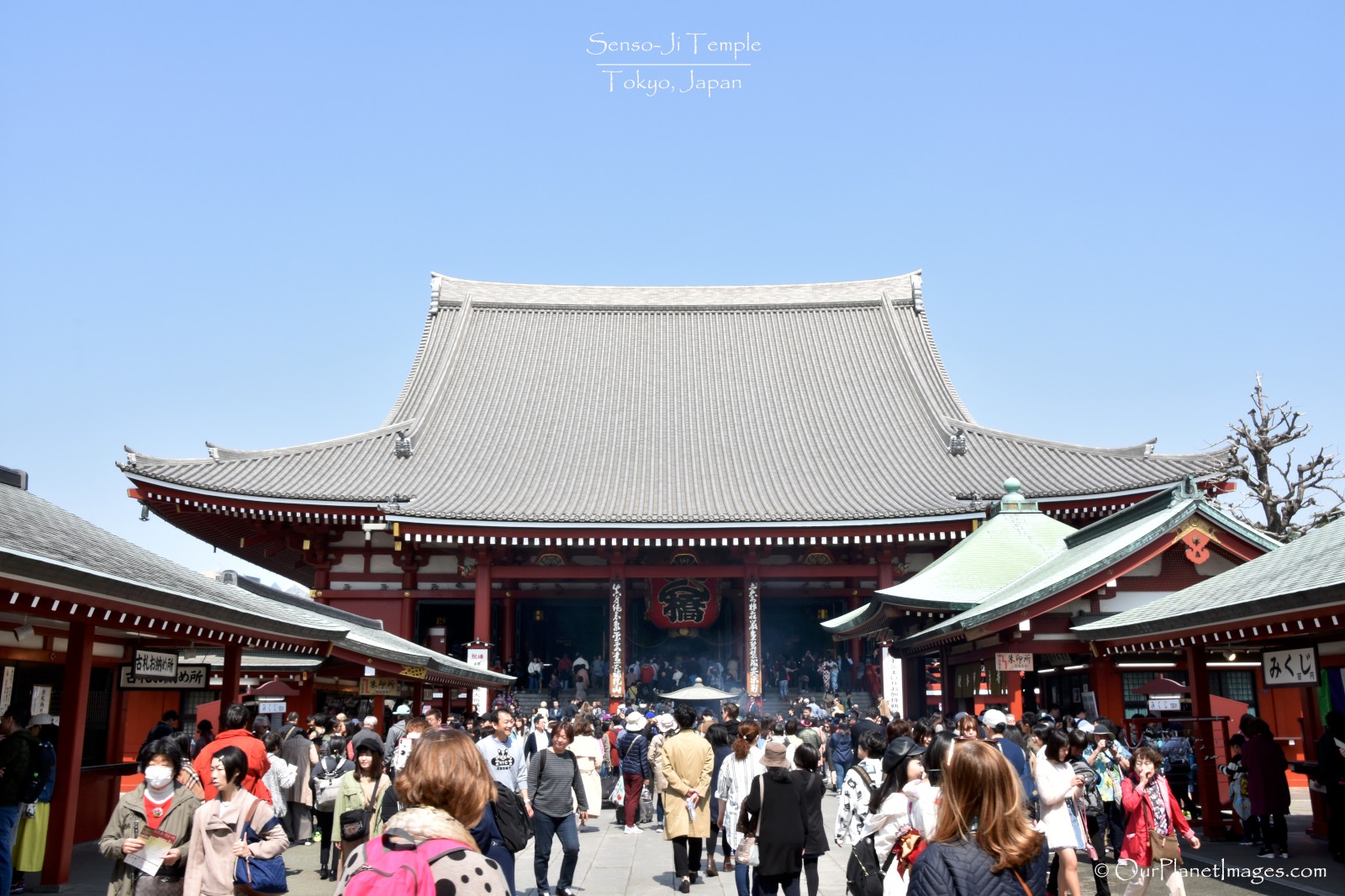
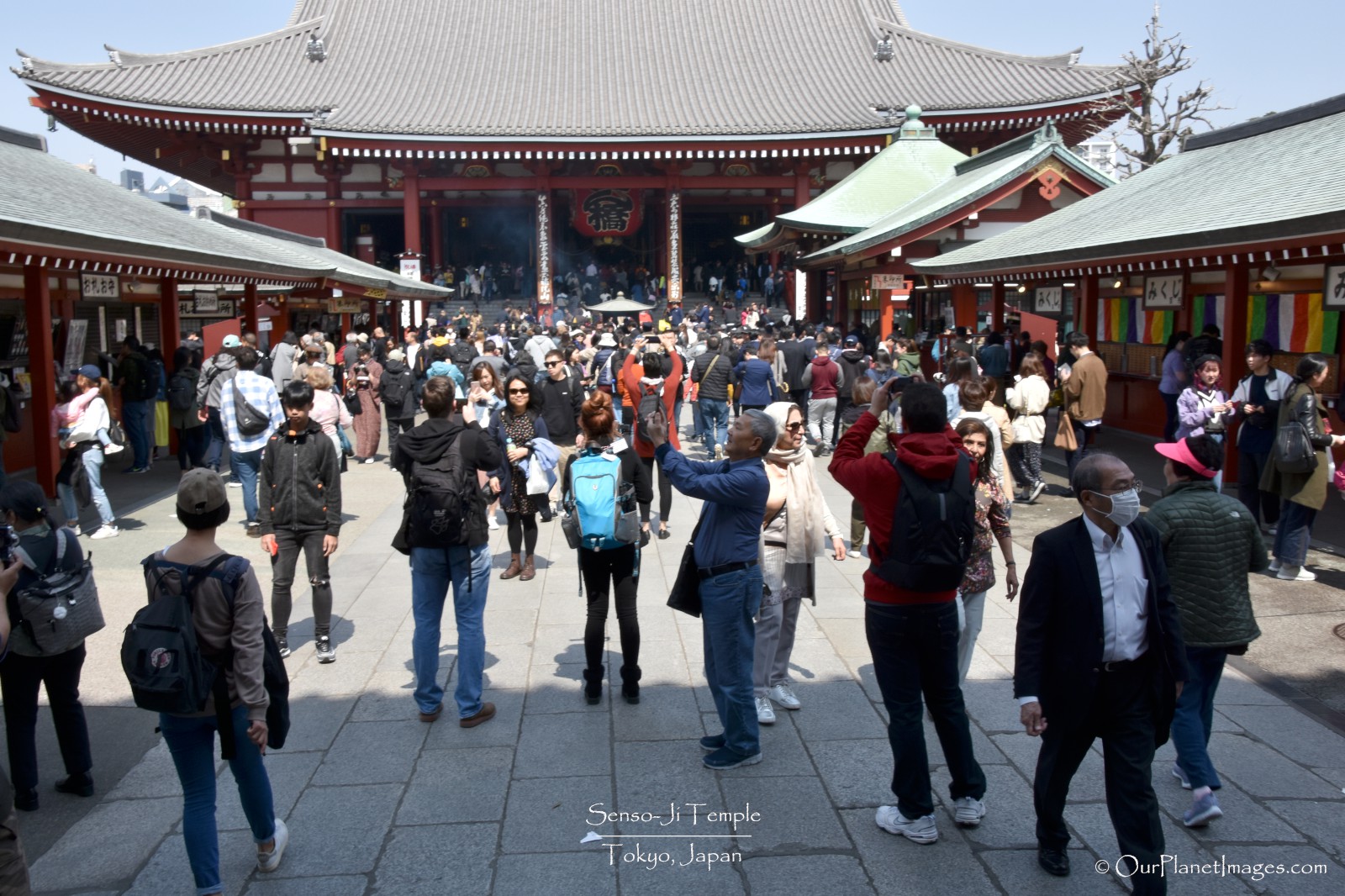
The Main Hall is called the Kannon-do because this where the statue of Kannon is held but it is not on display to the public. Just like the two gates the Main Hall has another massive red lantern hanging over the steps leading up to the doors of the hall. The ceiling inside the hall is ornate with paintings in the center.

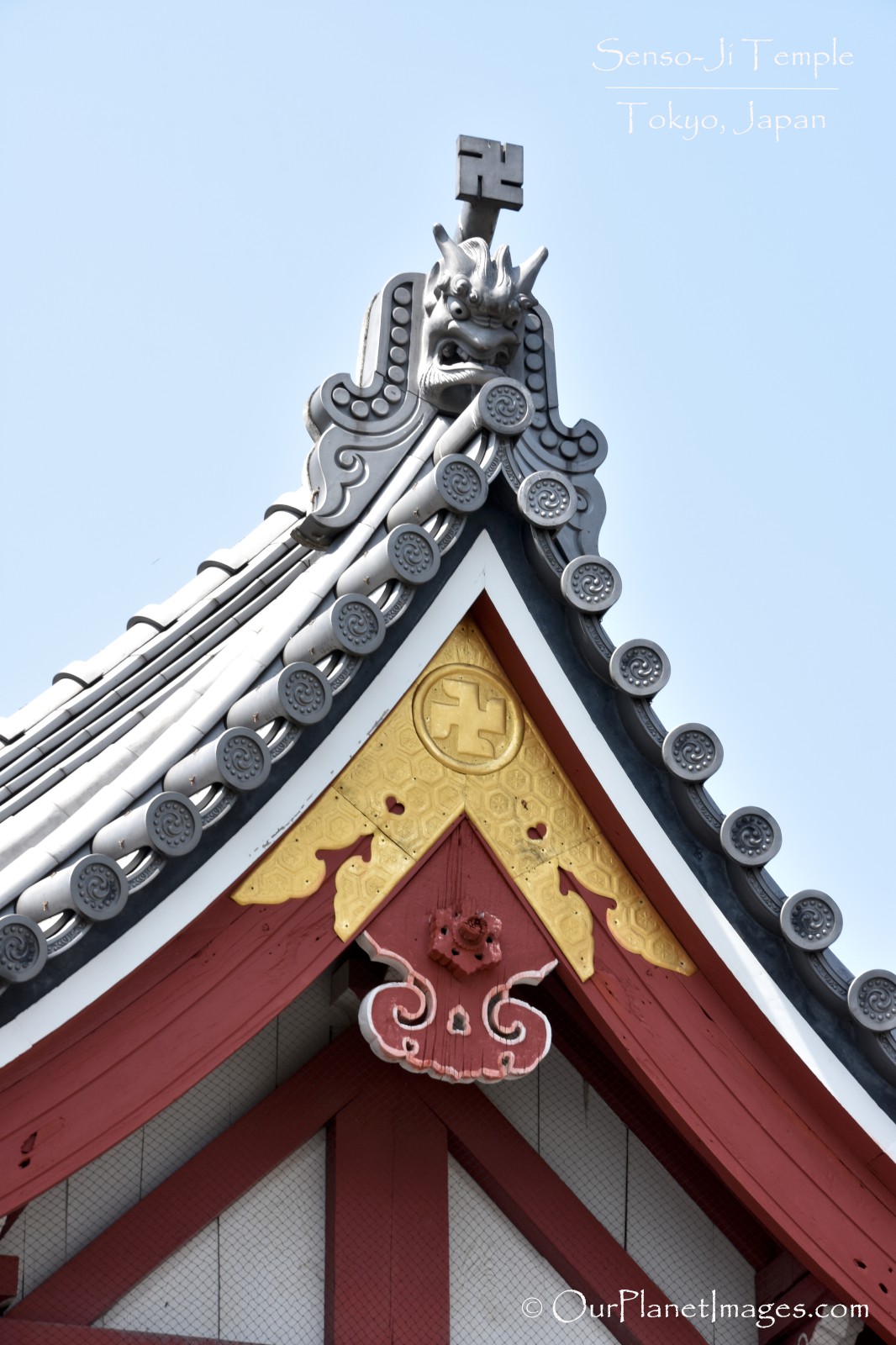
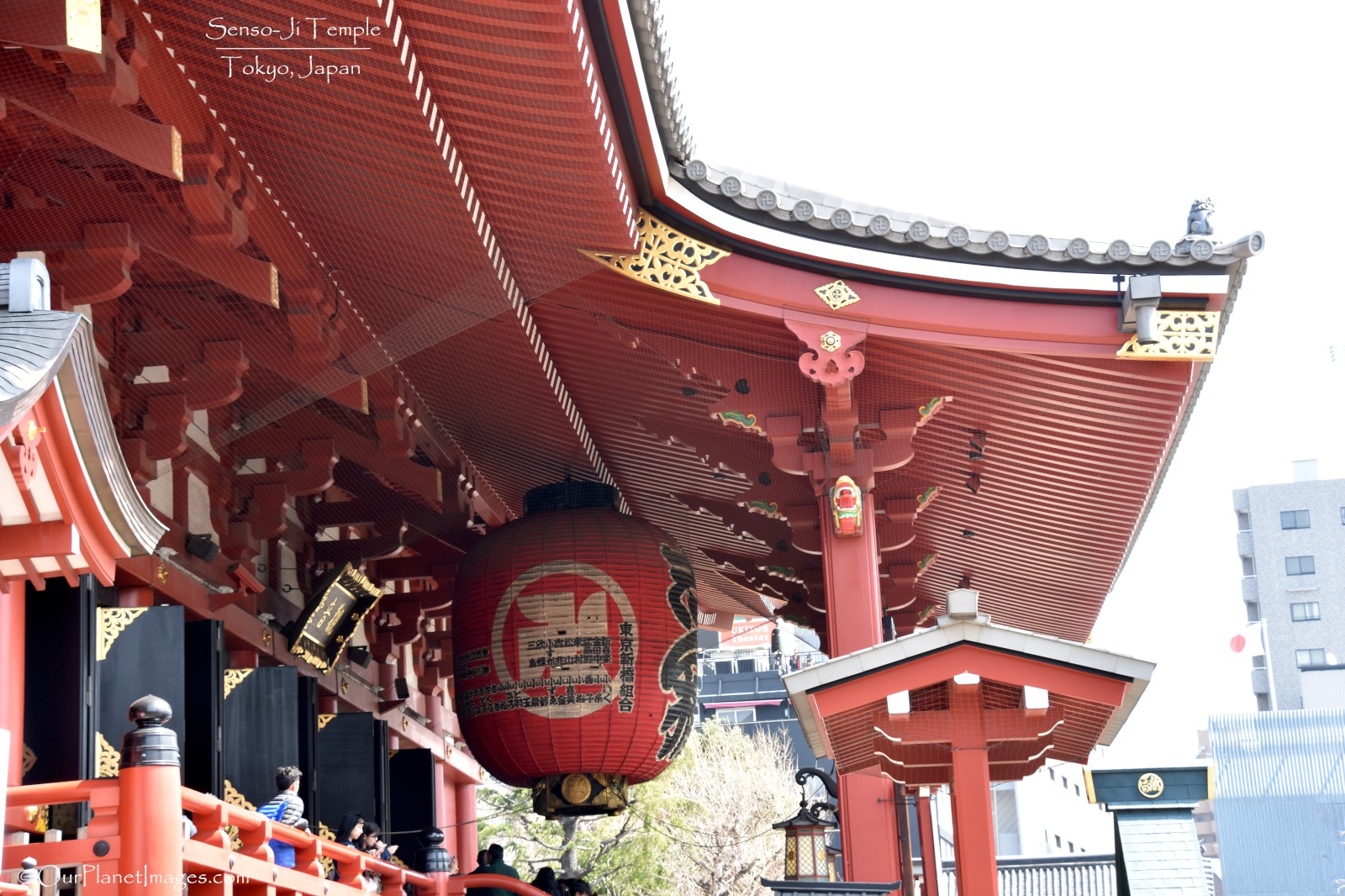
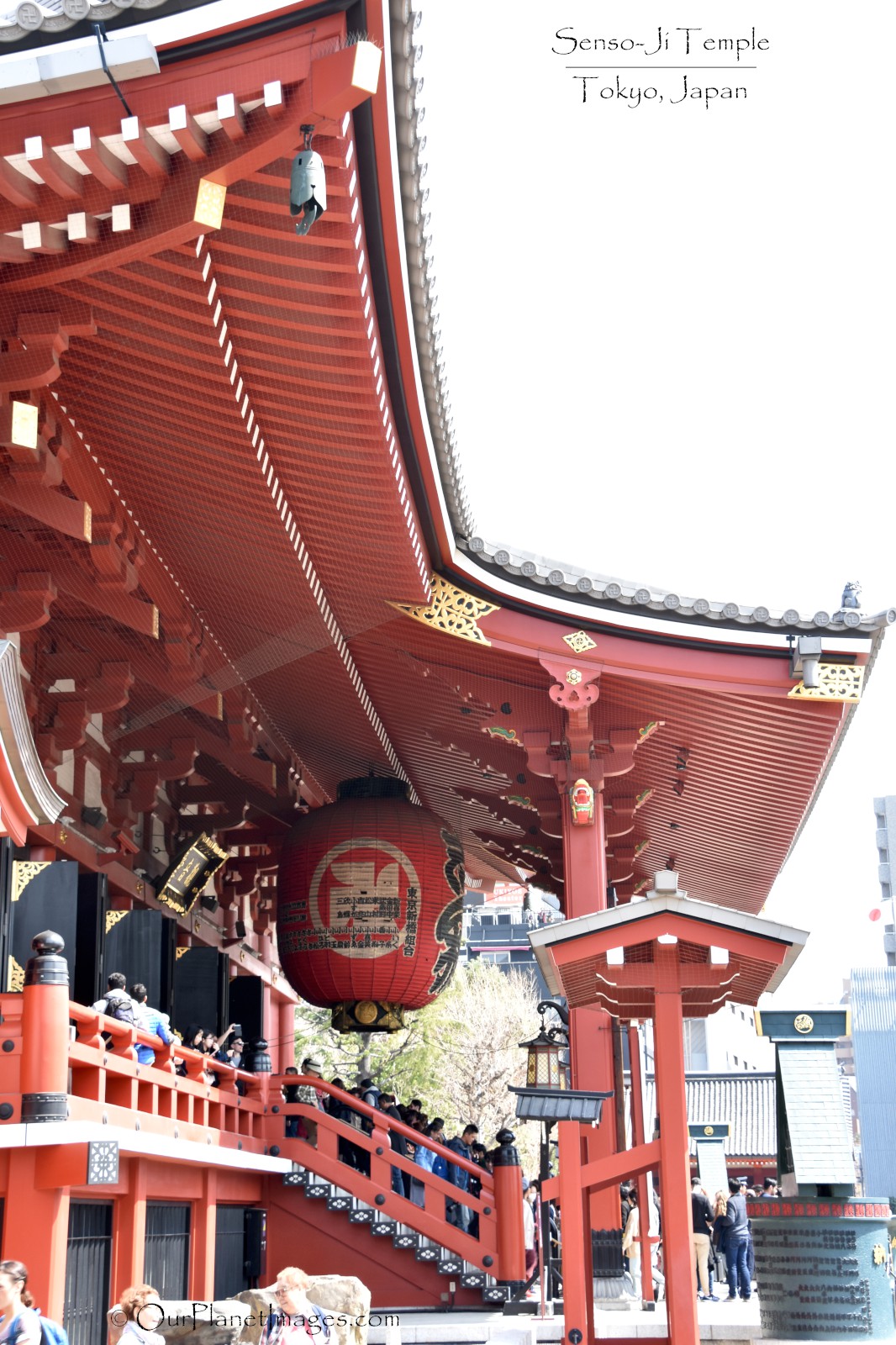
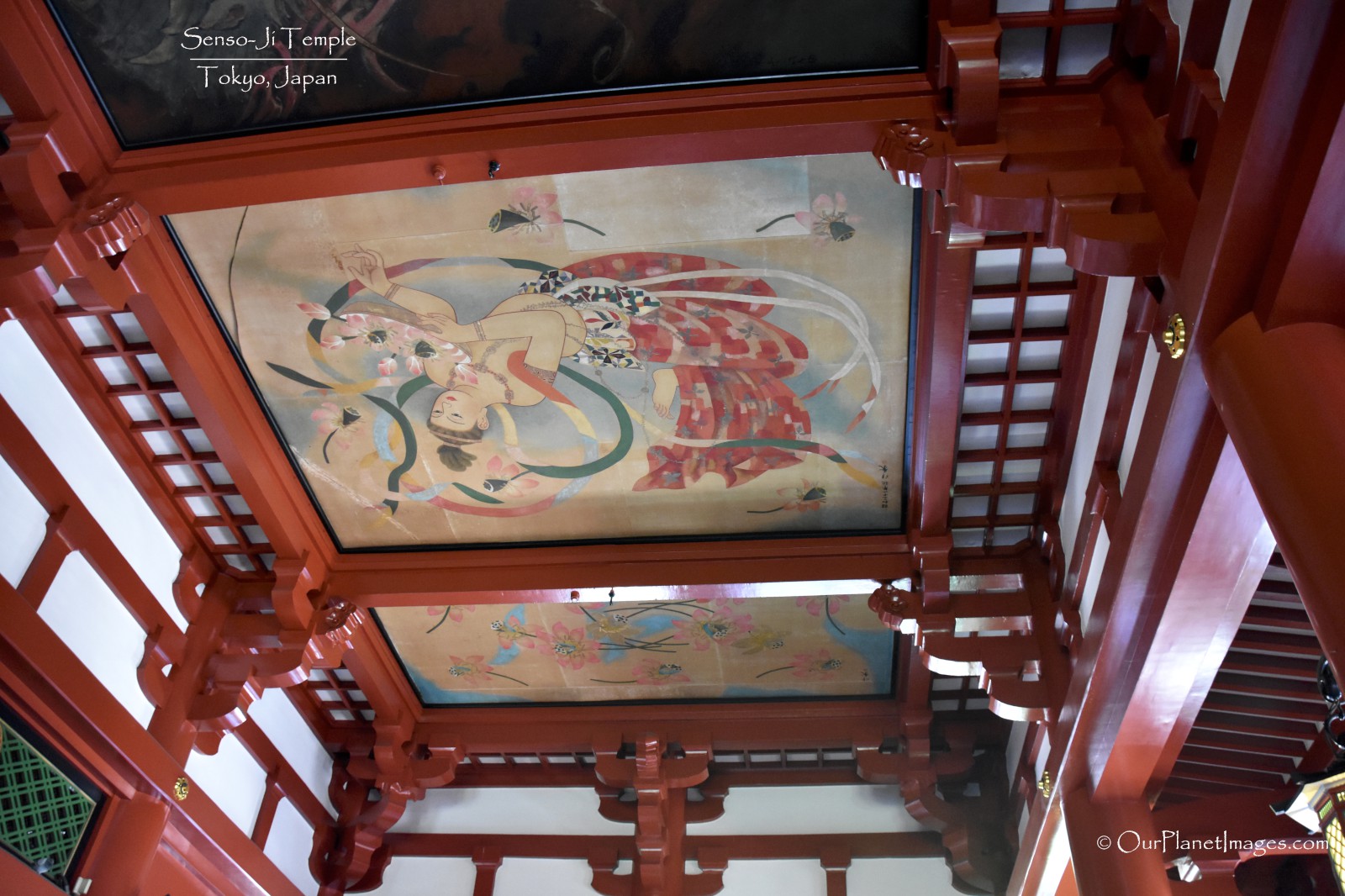

Five-storied Pagoda
The Five-storied Pagoda is the most impressive building of the temple. The original pagoda was built in 942 A. D. but was destroyed in 1945. The current pagoda was built in 1973 and stands 53.32 meters (175 feet) high.
The photos below show the five-storied pagoda from several places within the temple.
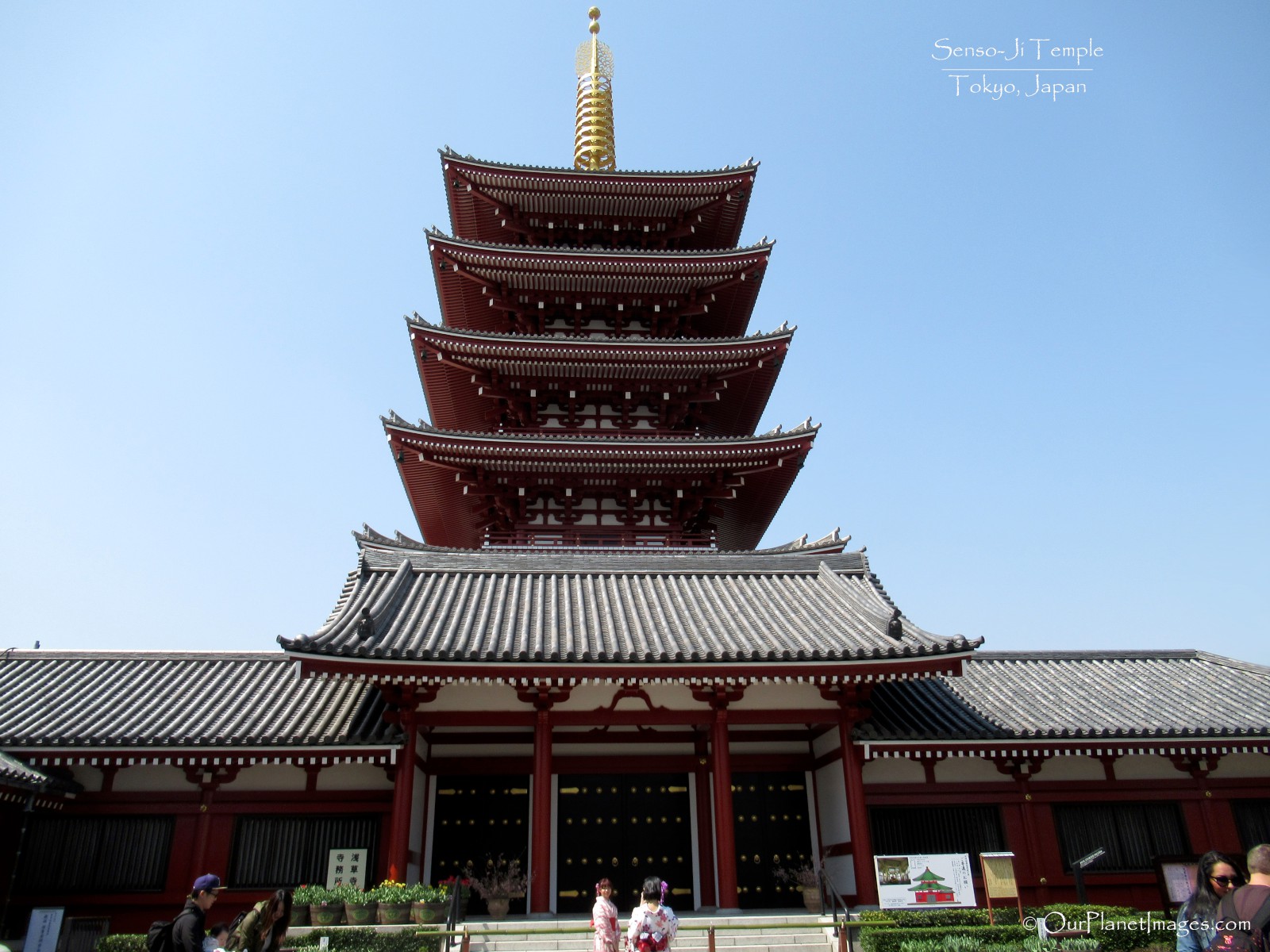
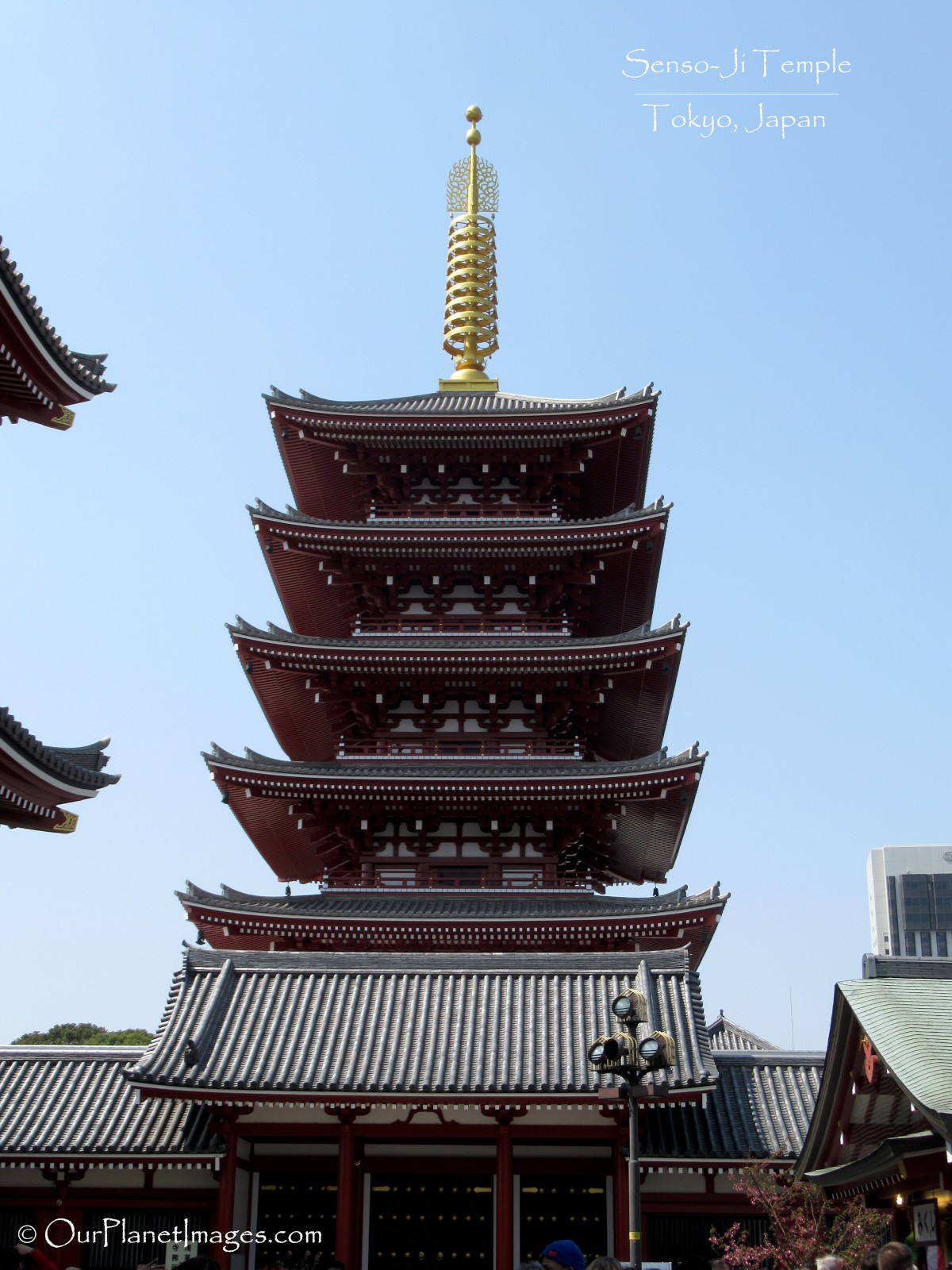

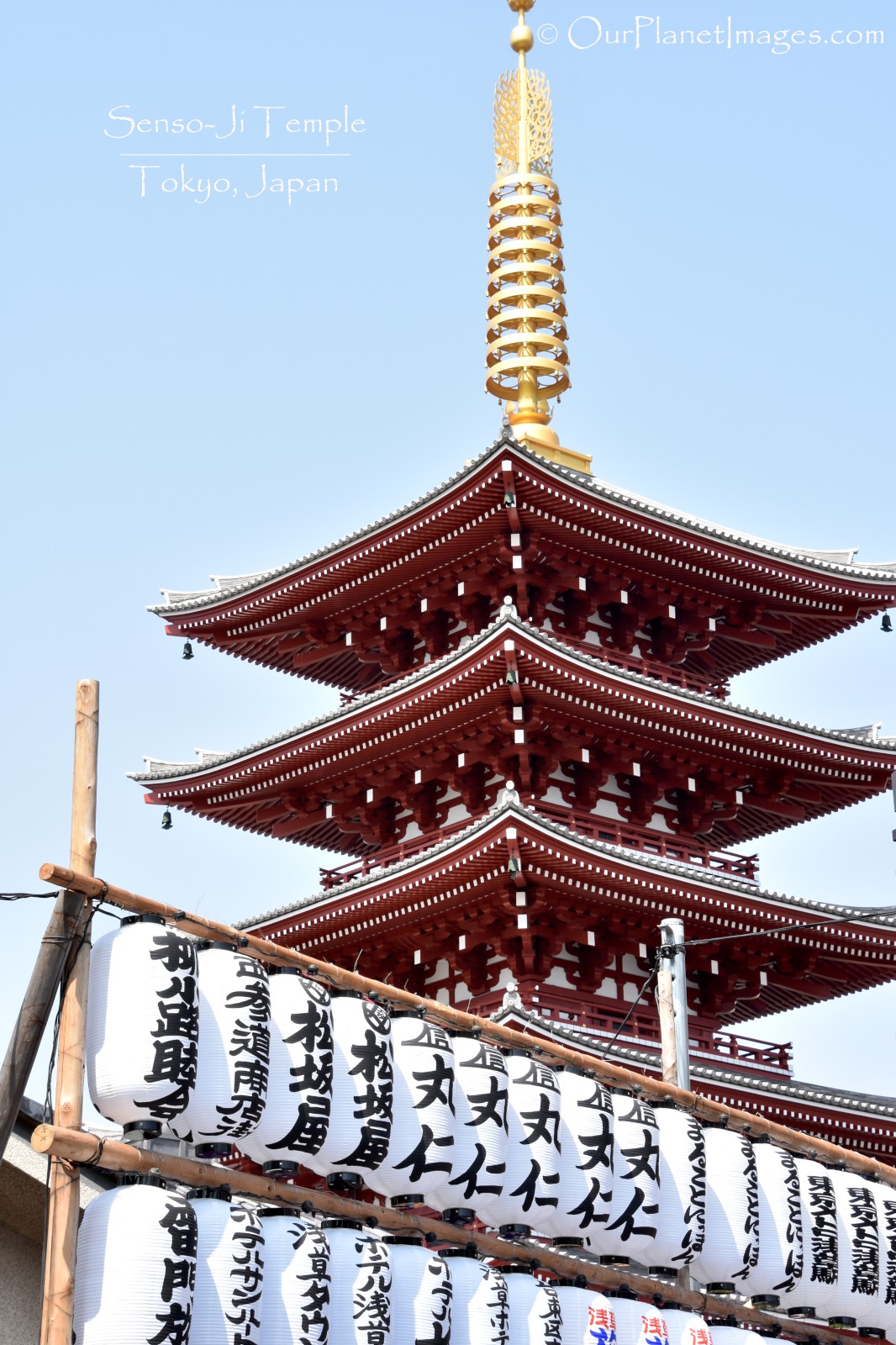
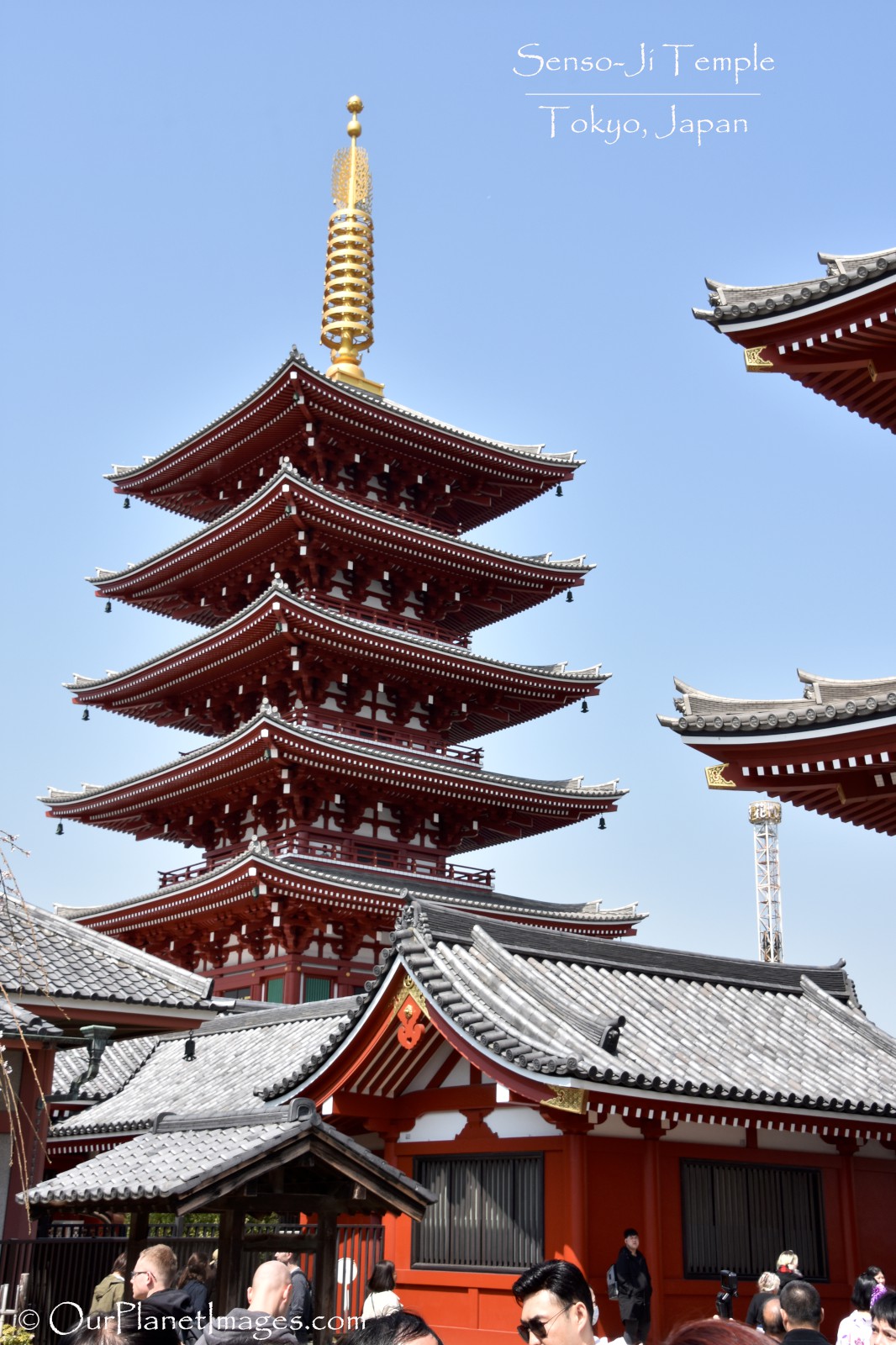
Other Features
Other than the main buildings of the temple, there are several other features that are interesting to see. Some of these features are shown below.
Buddha statues
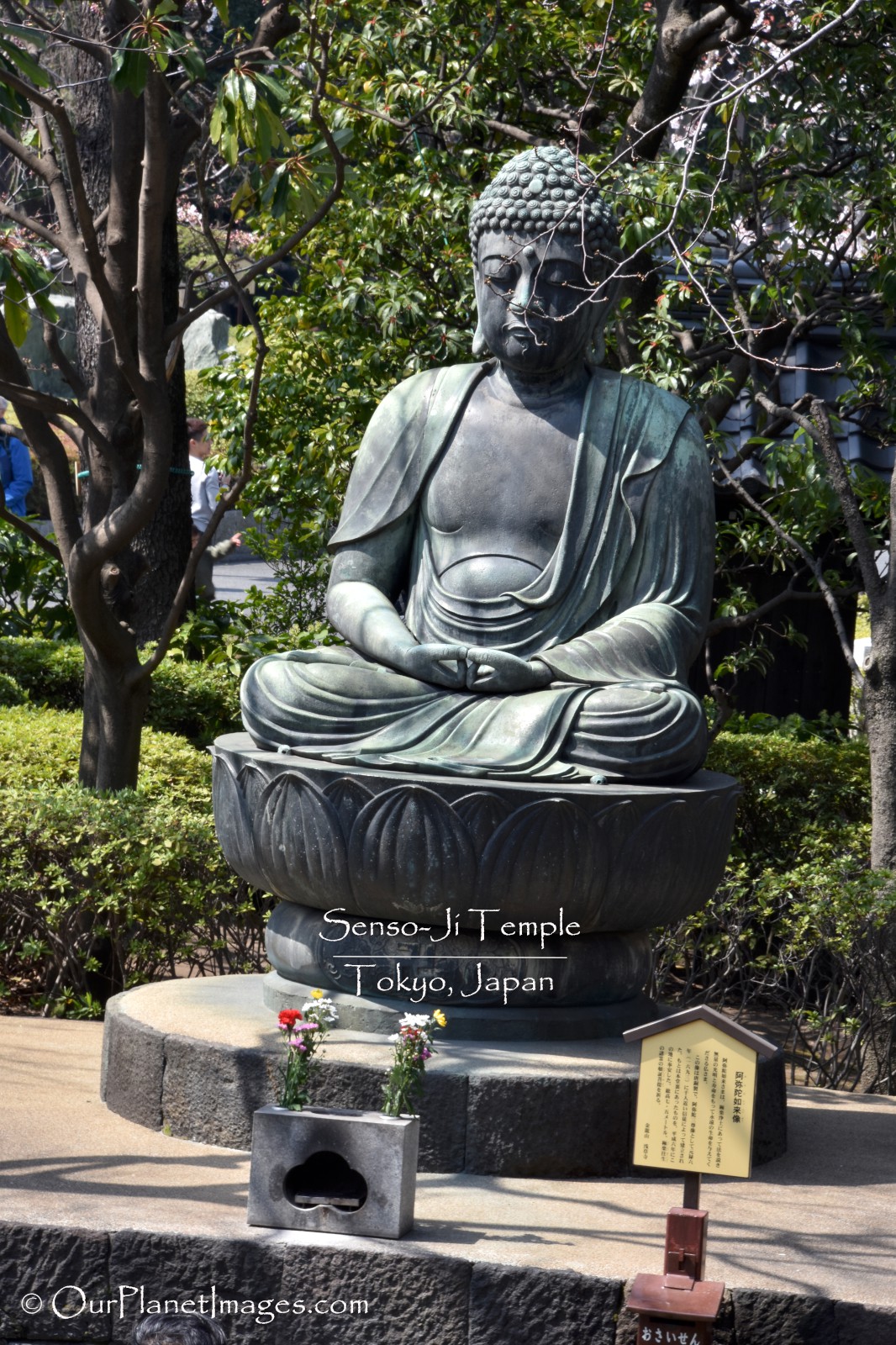
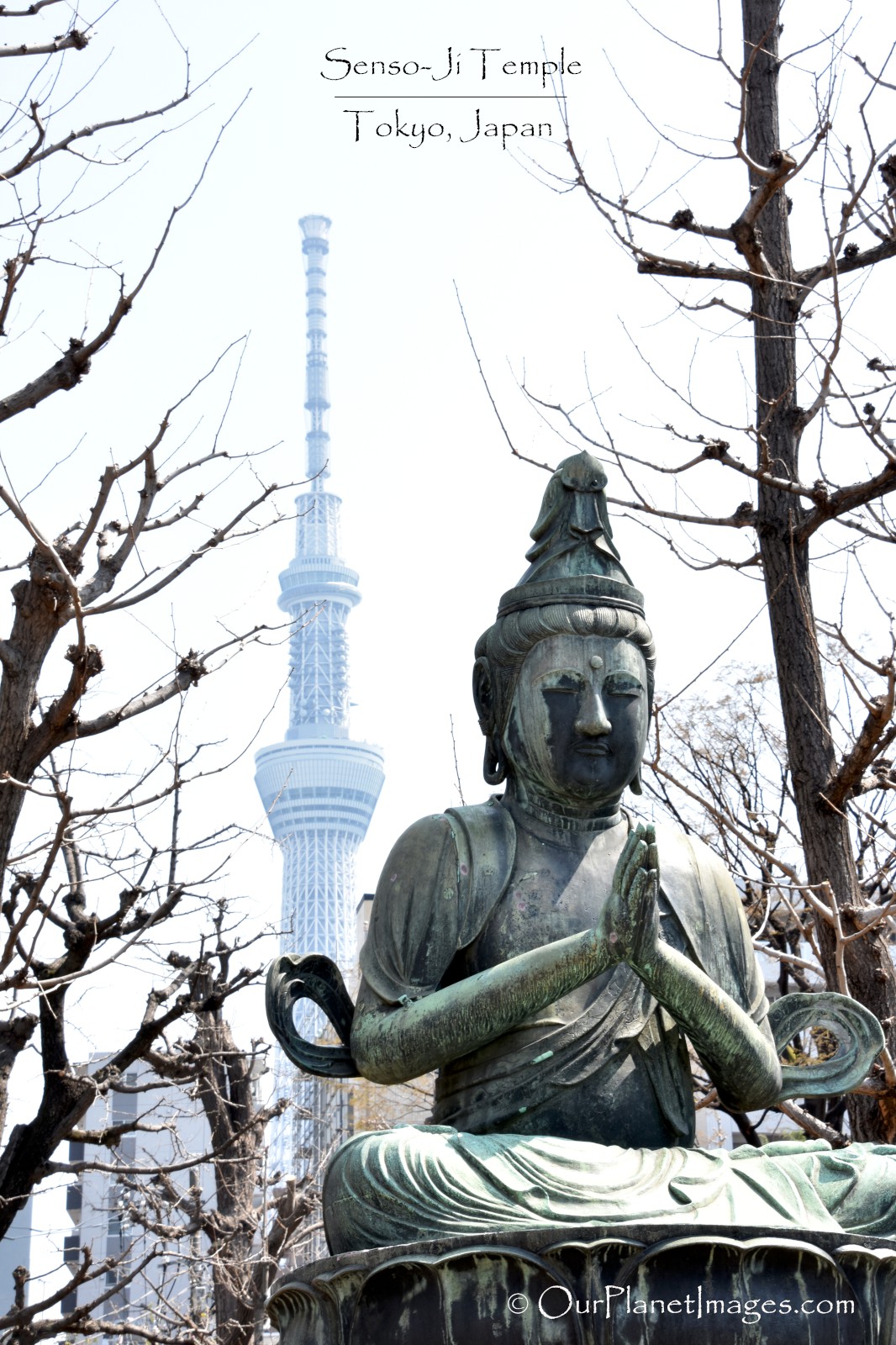
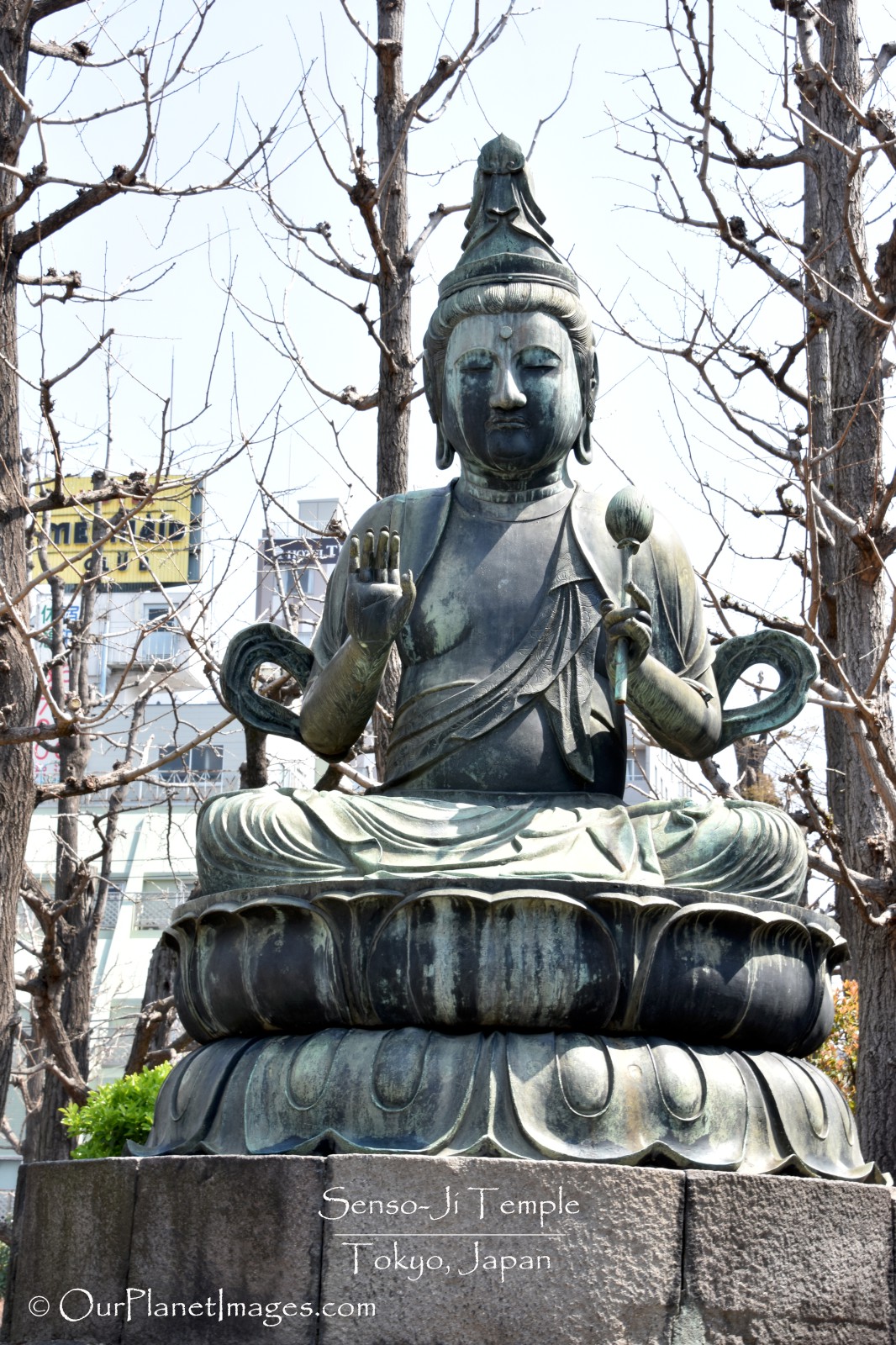
Waterfall that empties into a koi pond
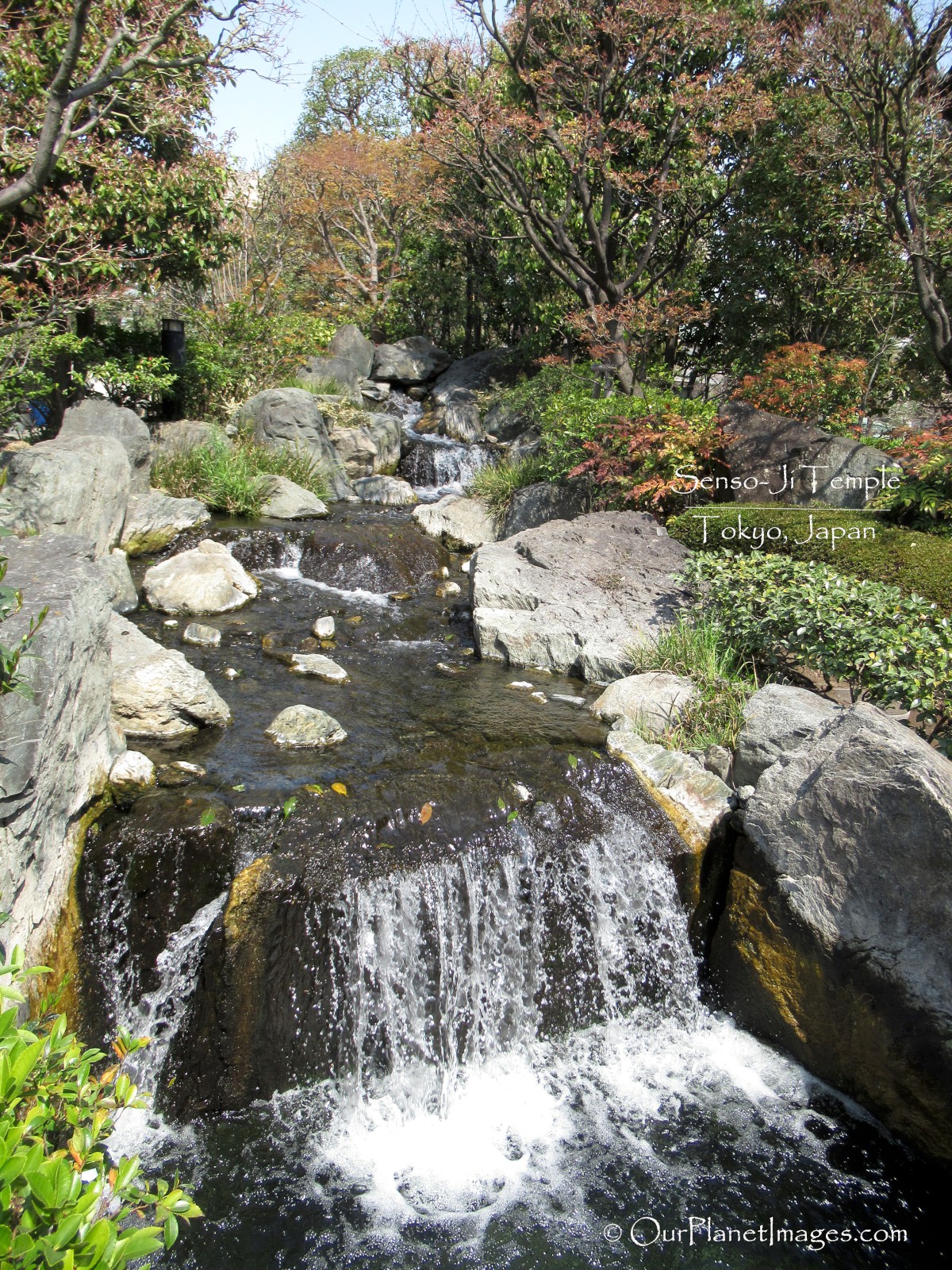
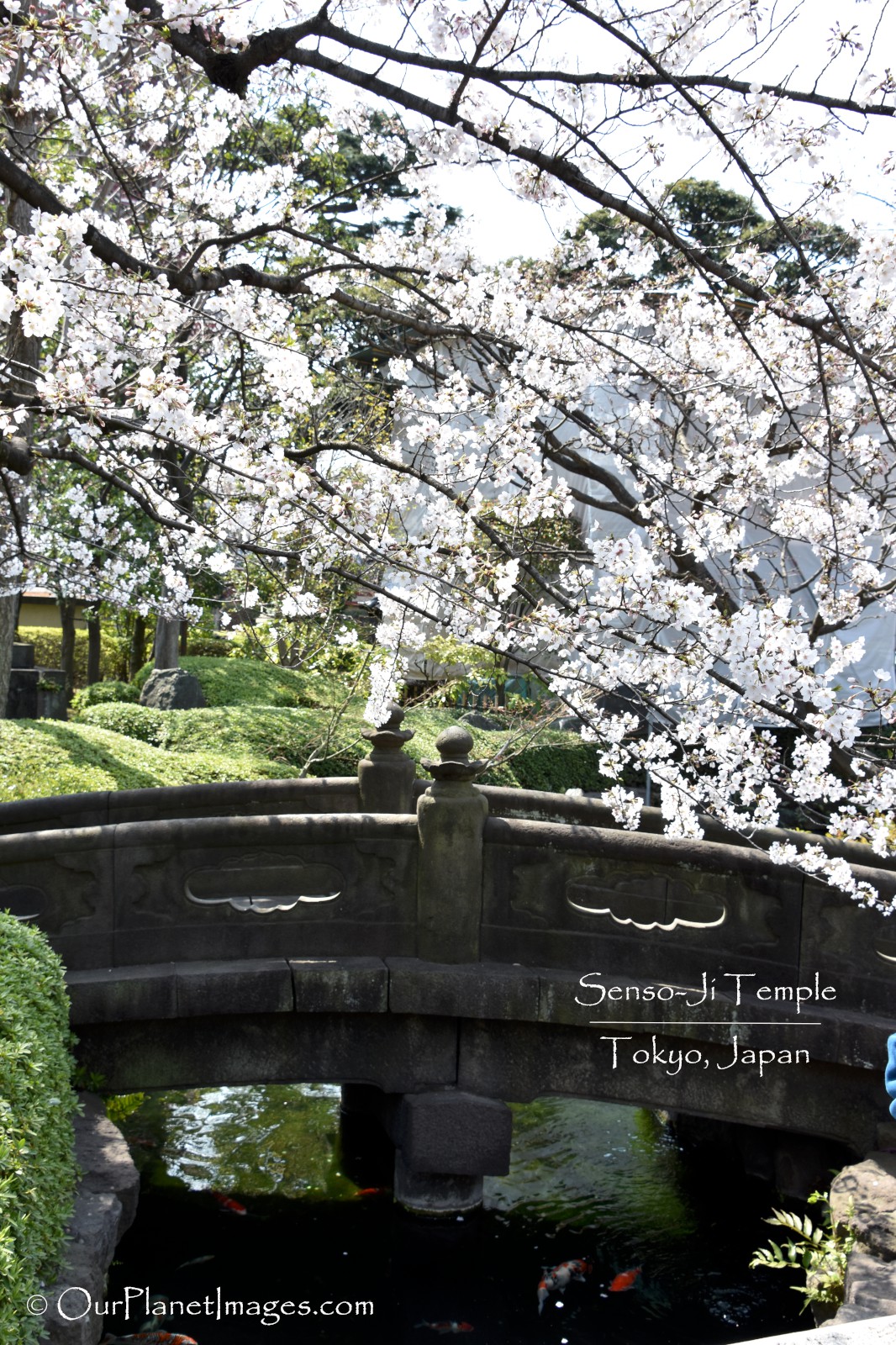
Additional features that are interesting to me.
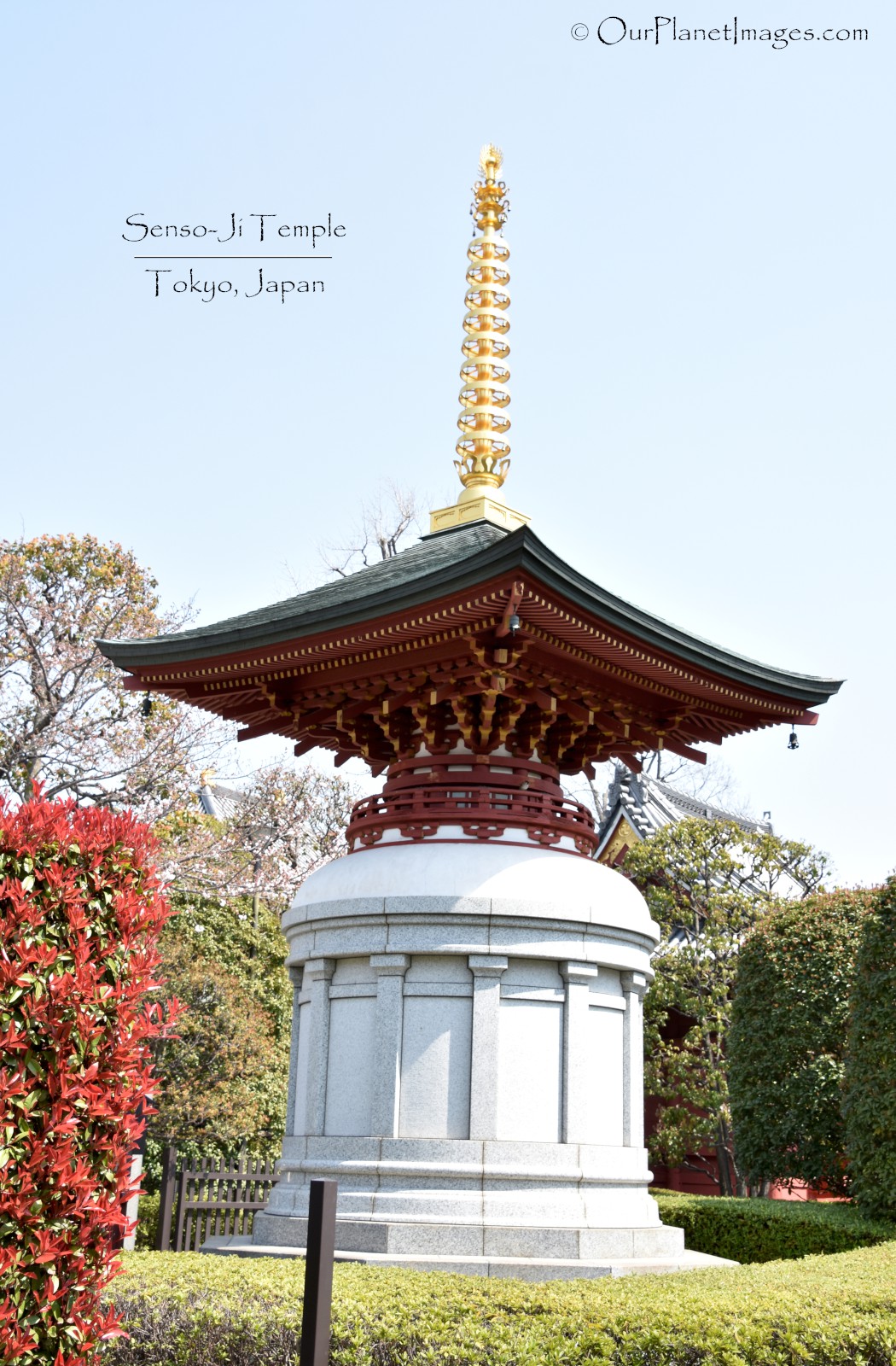
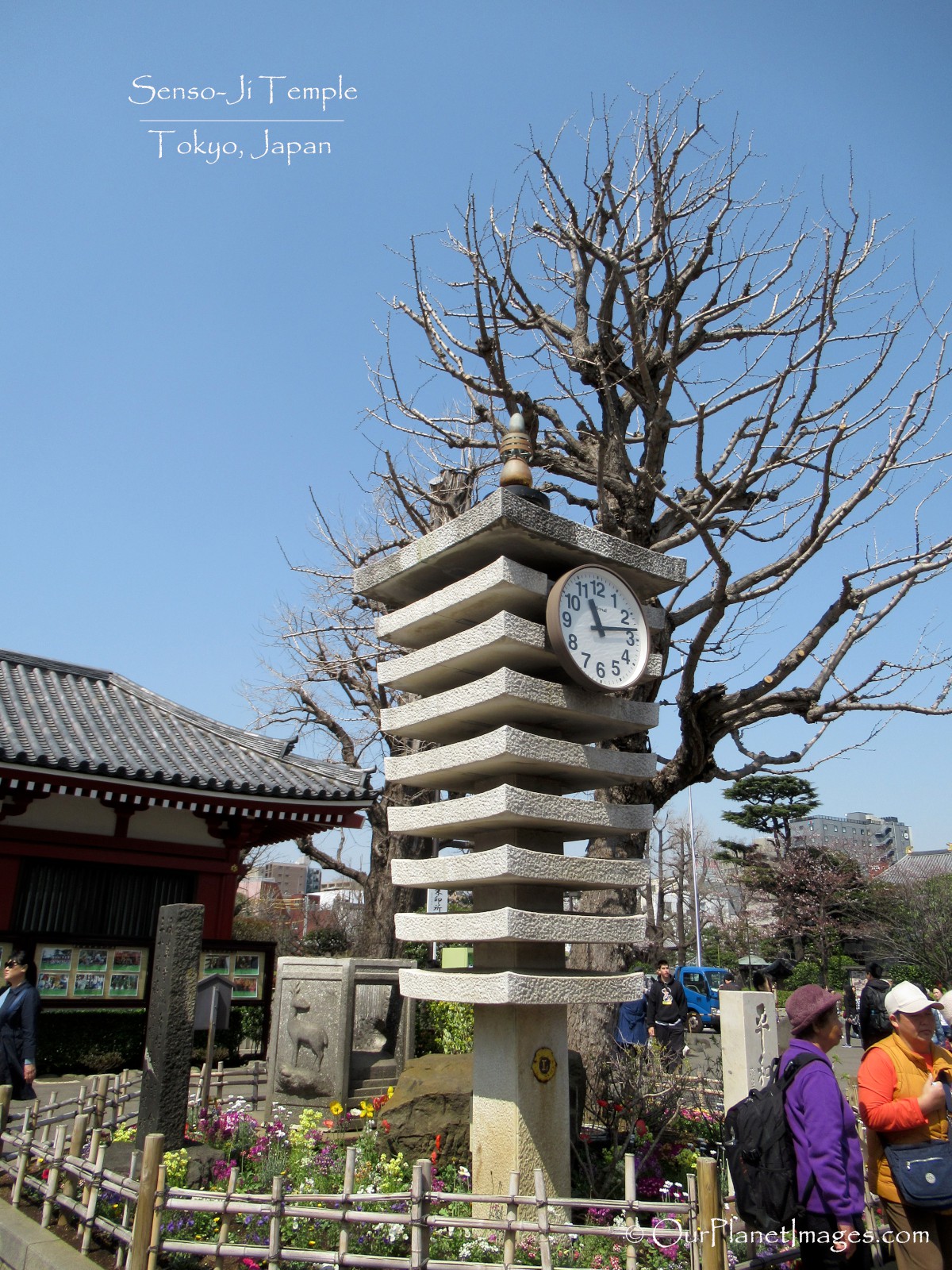
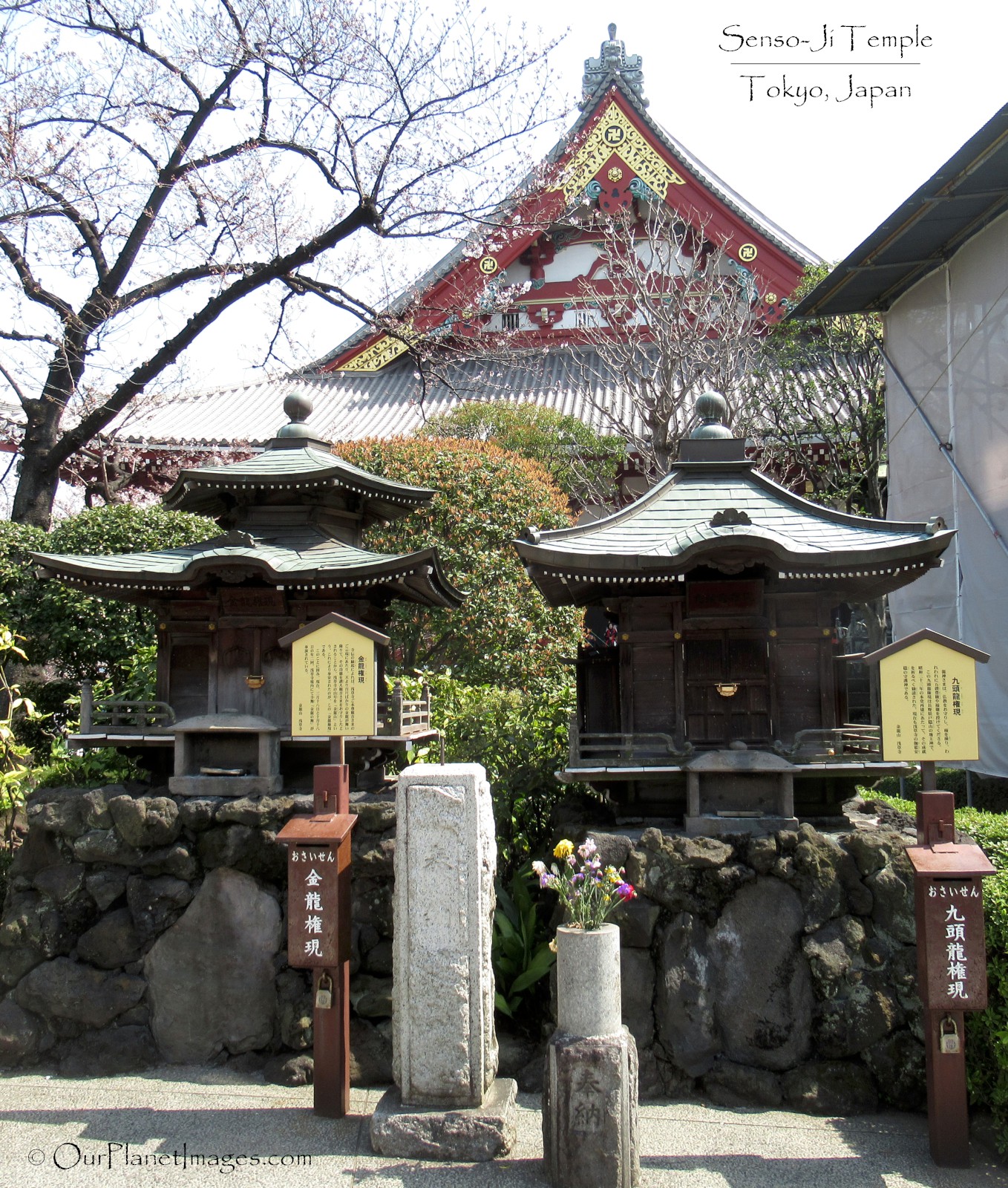
Women in Kimonos
The time that I was in the Senso-Ji temple was during the cherry blossom peak so the crowds were very large but it is common to see women dressed in kimonos especially in the temples.
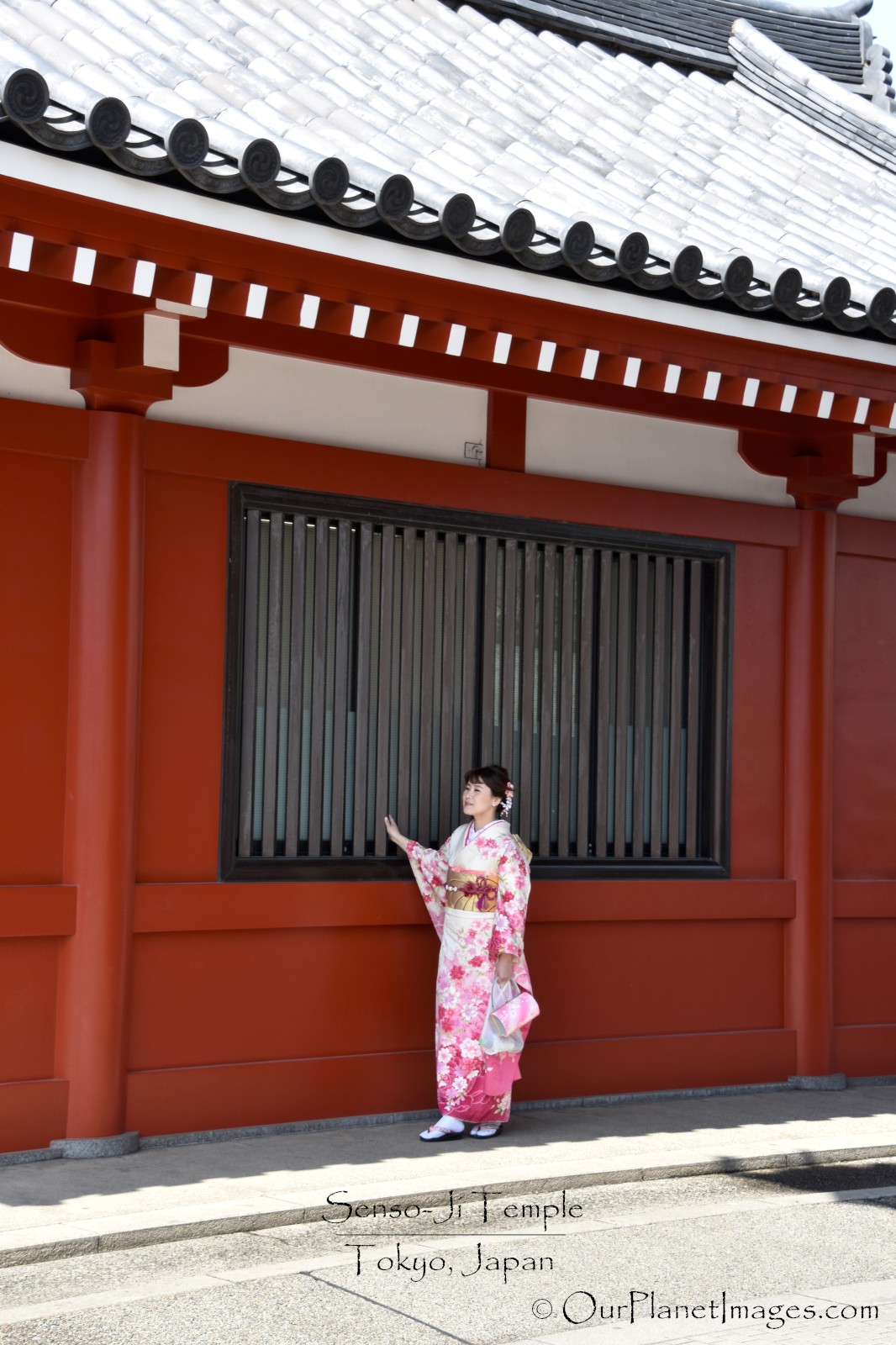
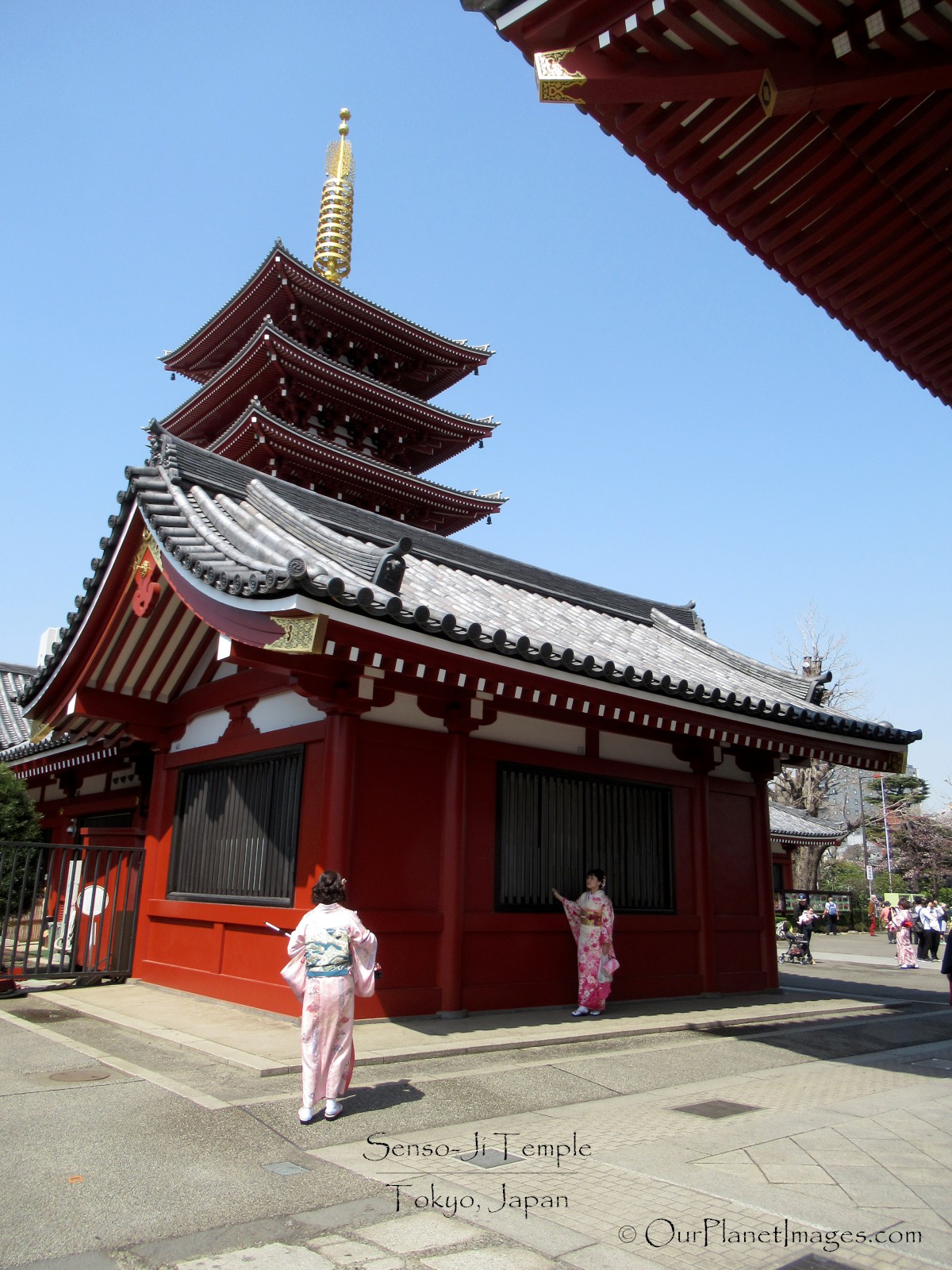
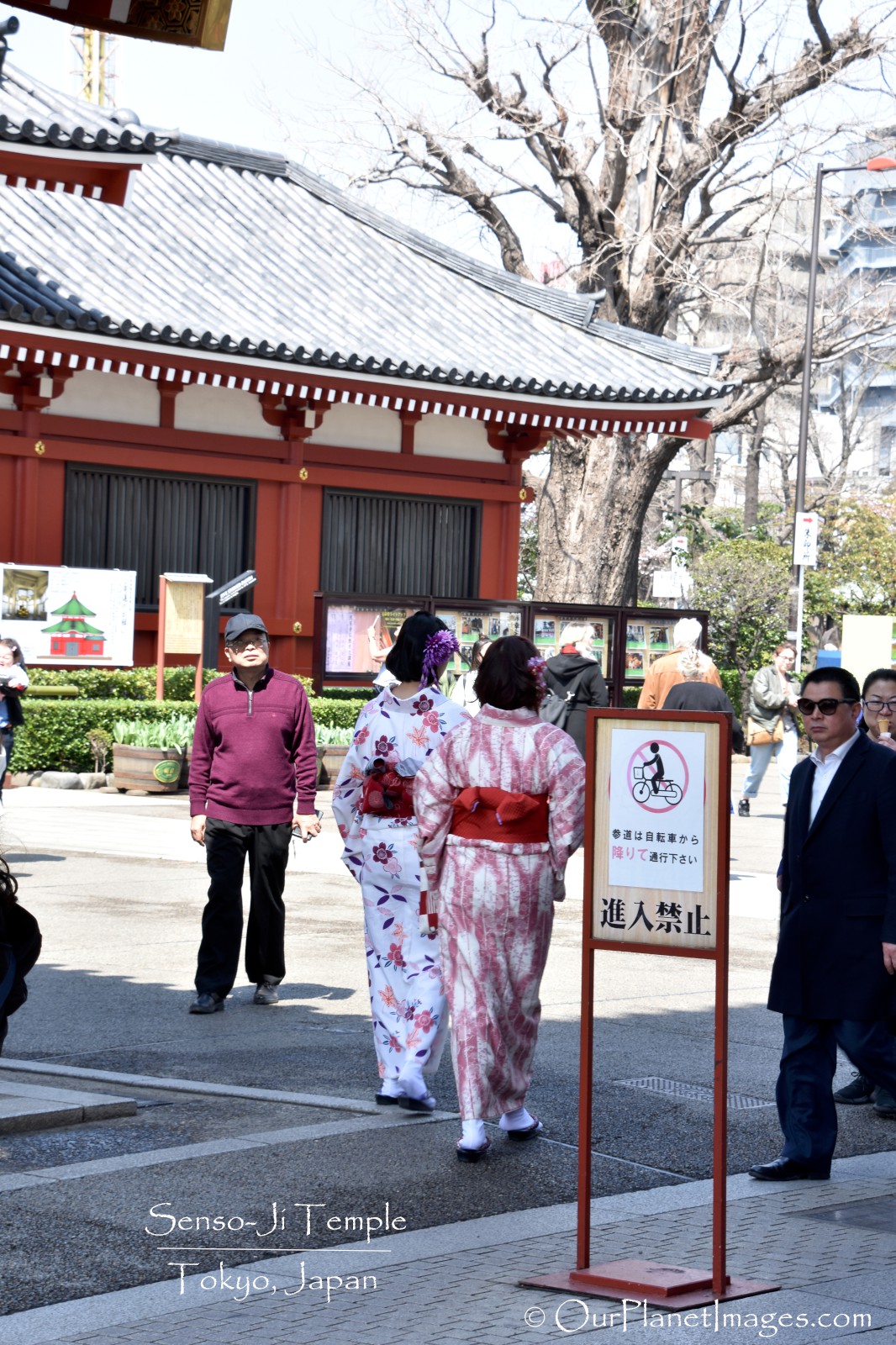
Shin-Nakamise Shopping Street
Located just outside Senso-Ji Temple is Shin-Nakamise Shopping Street. Although it is not part of the temple I thought that it is worth showing because it is interesting to walk through and check out the vendors.
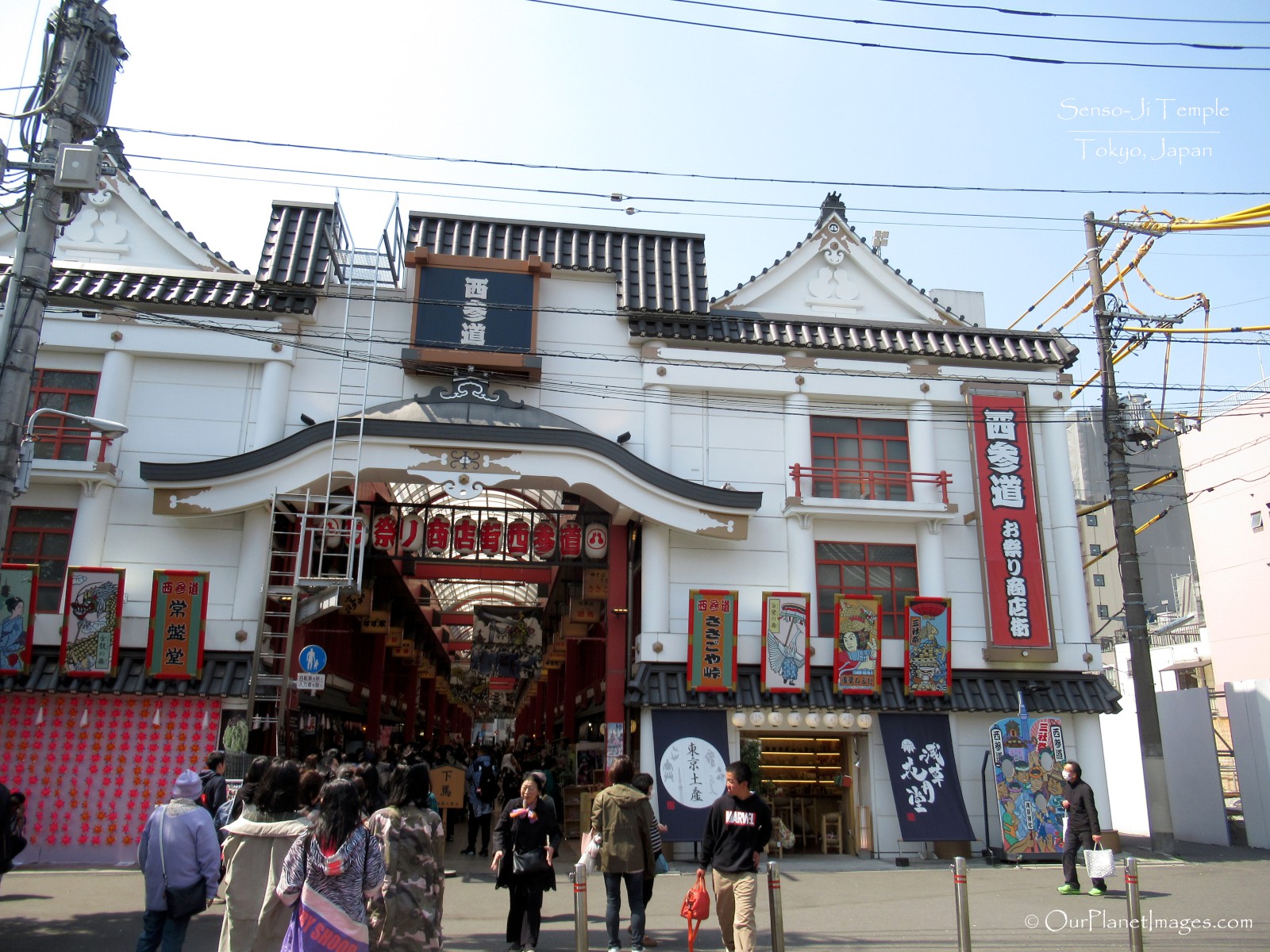

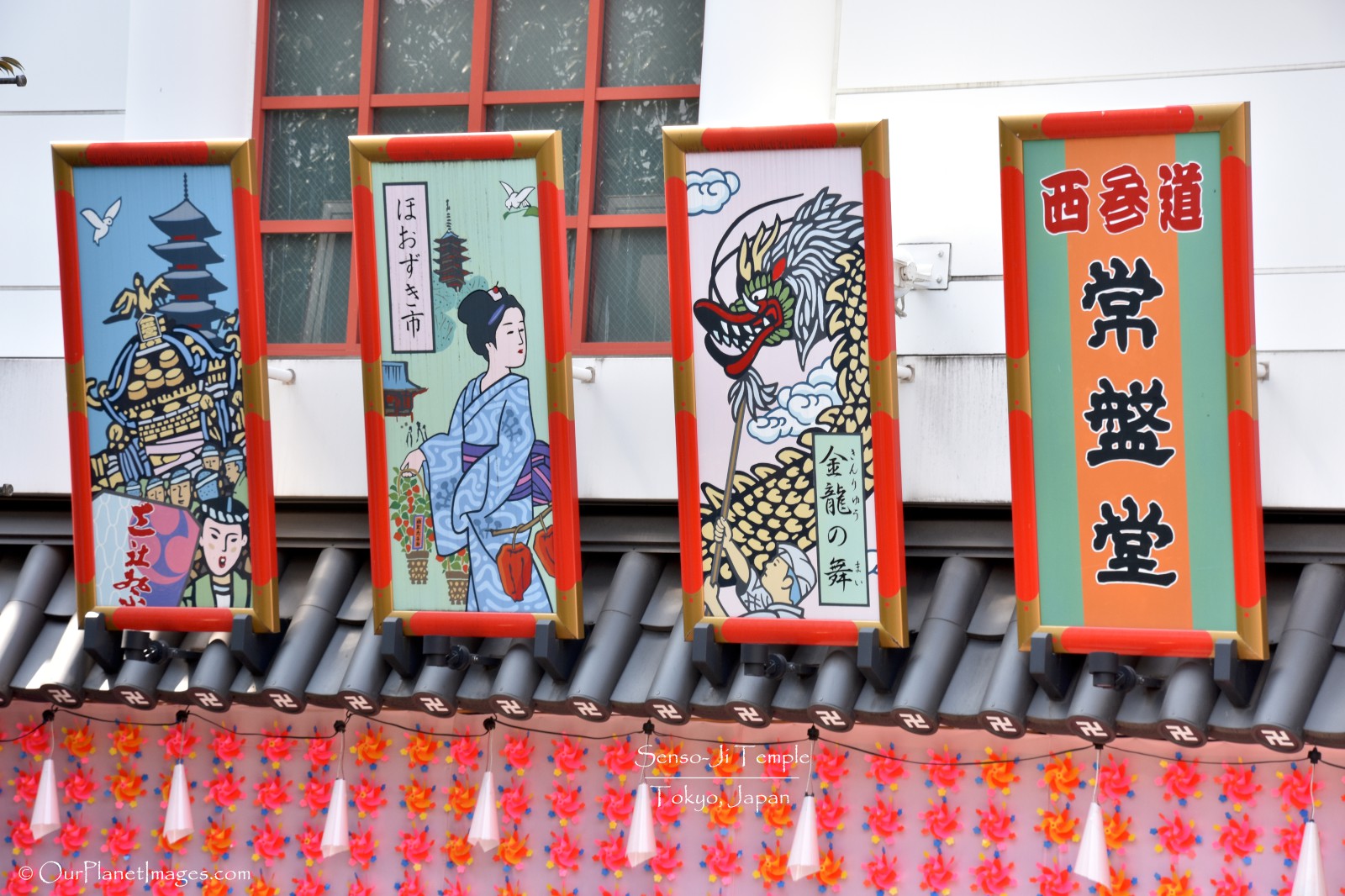
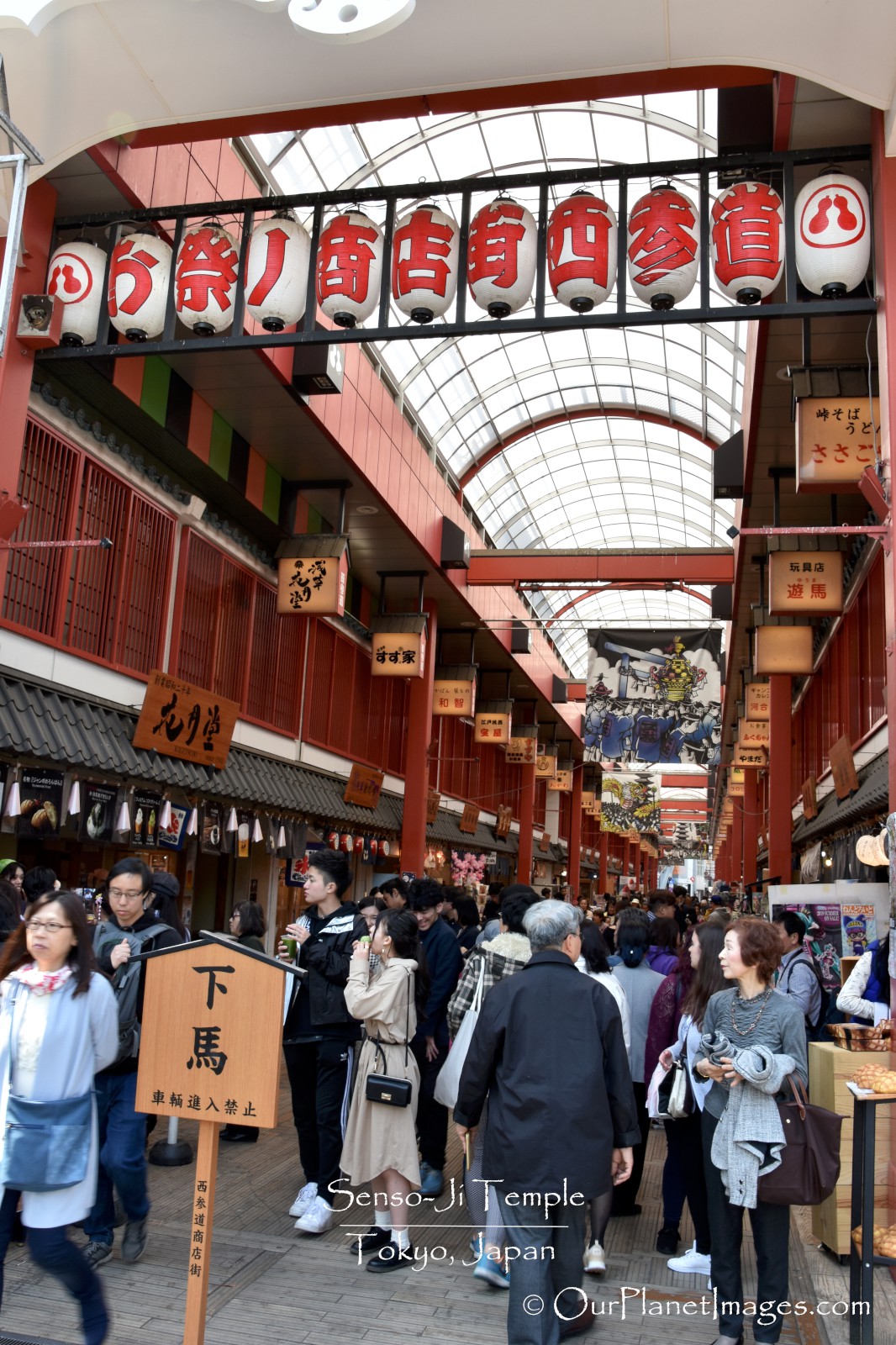

The Dust on My Shoes
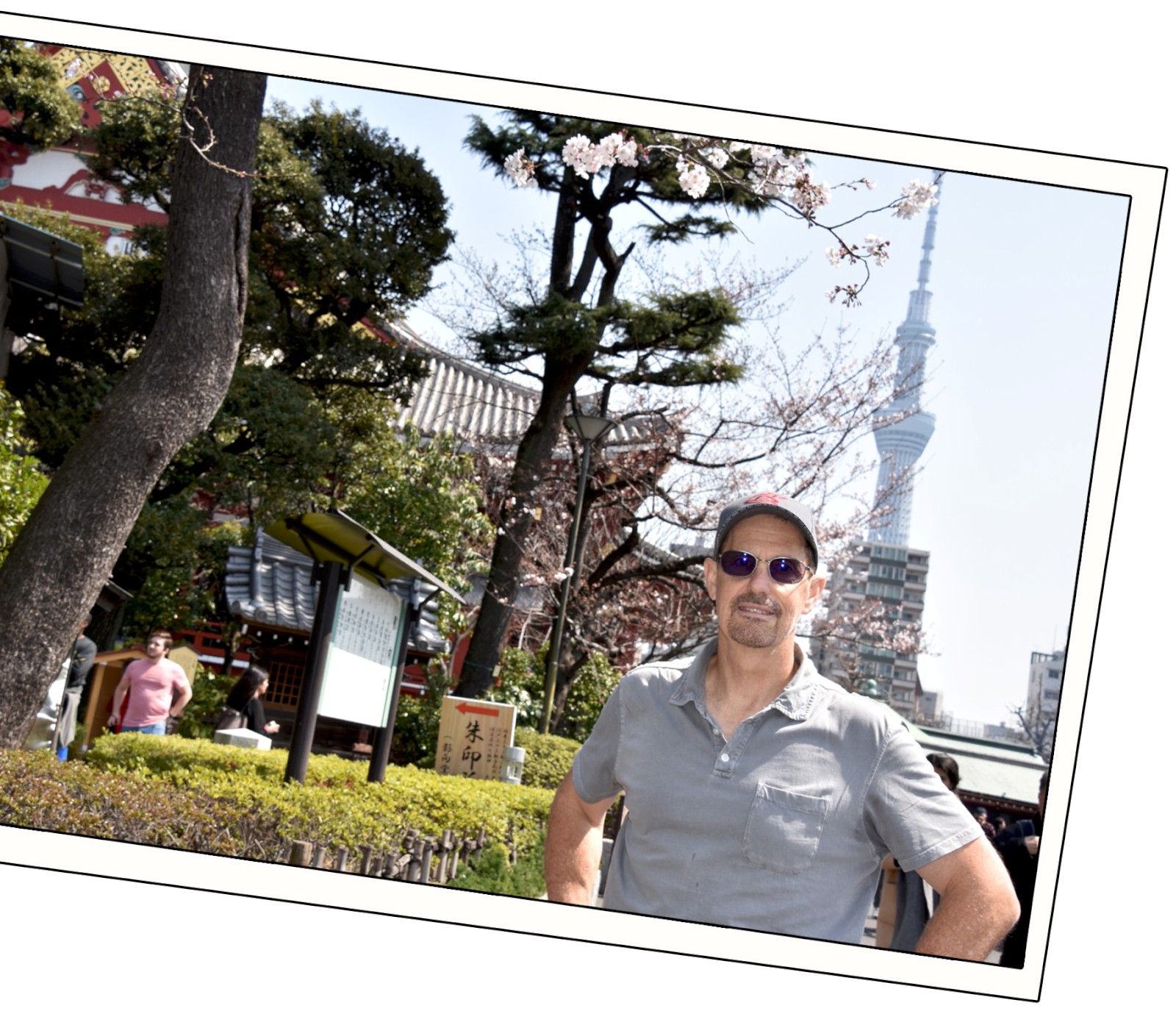
Senso-Ji Temple is the most famous temple in Tokyo. When someone says that anything in Tokyo is famous or popular then it should go without saying that it will be crowded. If you have been following my blog for any length of time then you know that most of my photos don’t have many people in them but taking photos without people in them was impossible at the Senso-Ji Temple because of the large numbers of people visiting the temple and surrounding area.
The architecture of the temple was bright and colorful. I particularly liked that the ends of roof supports were painted white. It really accentuated roof design and gave the temple a unique pattern that is exclusive to Japan.
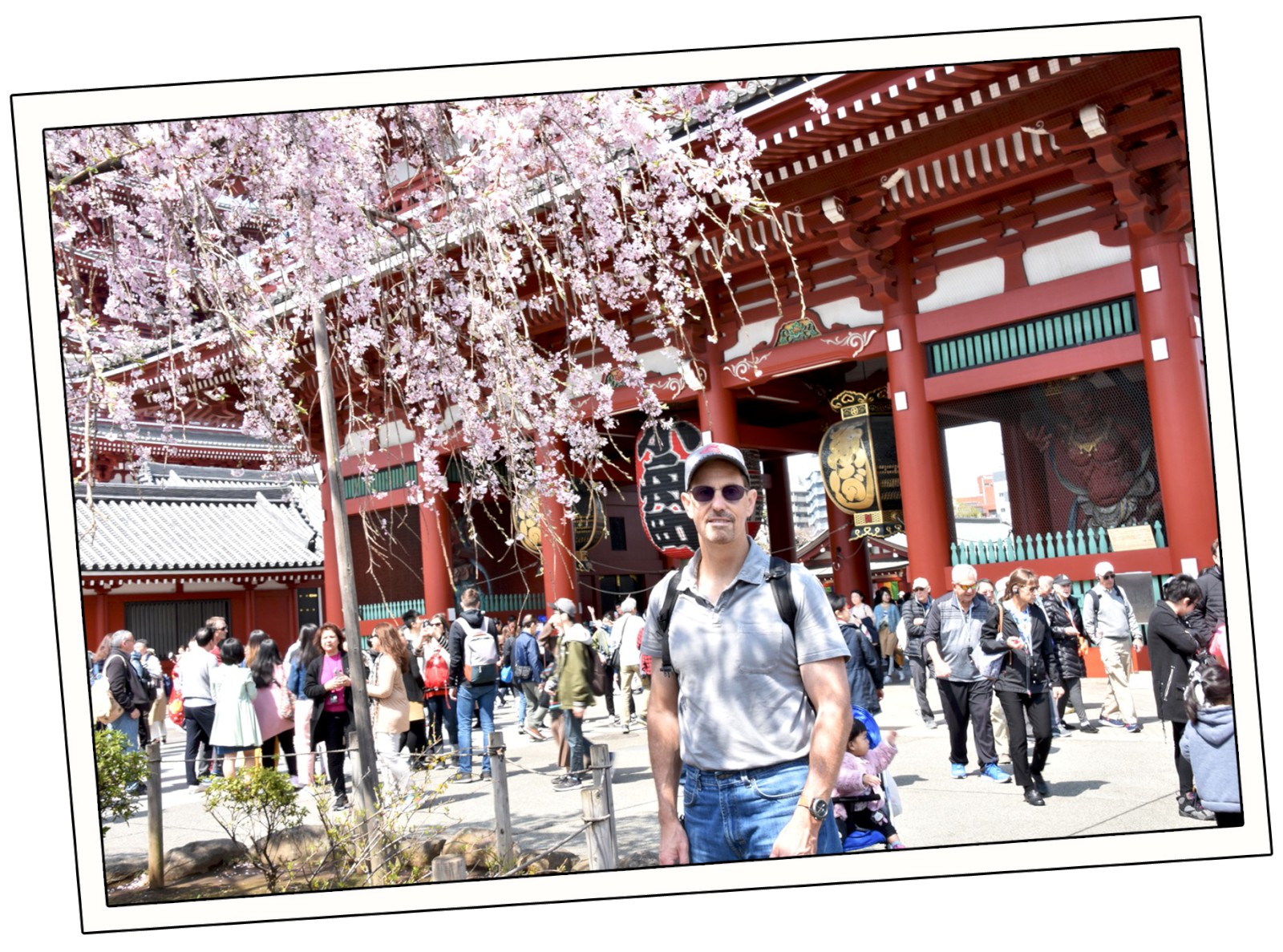
Many of the temples in Japan have a similar architectural style but each temple seems to have a defining element. The defining element of the Senso-Ji Temple are the oversize lanterns.
Related Posts

